
CEREUS GRAPHICS
QUIETLY STEALS THE SHOW
STATE OF PRINT & PACKAGING














































































Learn how Fiery Impress can transform your packaging production
Consider

Scan the code to Do the Math!


CEREUS GRAPHICS
QUIETLY STEALS THE SHOW














































































Learn how Fiery Impress can transform your packaging production
Consider

Scan the code to Do the Math!
“Print and packaging” covers an awful lot of ground, so we have a wide range of features in this issue. Our last edition— Issue 4—was our Technology Outlook issue, so in this issue we will be looking at some other aspects of print and packaging aside from “feeds and speeds.”
But, yes, there are articles on new packaging and printing equipment: David Zwang looks at HP’s new PageWide press for inkjet carton printing on page 14, Patrick Henry looks at UV retrofits for offset presses on page 48, and Mary Schilling looks at “chem-stack design” for flexible packaging printing on page 80. There is an article about cuttingedge new ink additives: Mary Schilling talks with Diversified Nano Solutions about a biomarkerbased ink additive for track-and-trace packaging applications on page 18.
Color management remains a perennial challenge so we offer tips for brands to maintain color consistency on page 56. And there are articles on overarching trends: Joanne Gore looks at the top drivers of the future of labels and packaging on page 42, Oliver’s Katrina Edwards explains why folding cartons are the next industry disrupter on page 70, and the latest installment of our "Tales from the Database" series looks at print businesses’ interest in adding packaging printing capabilities on page 8.
Digital embellishments are poised for high growth, but the embellishment landscape is still very much the “Wild West,” so Kevin Abergel makes “The Case For Standards In Digital Print Embellishments” on page 20. Phoenix, Ariz.’s Cereus Graphics recently won multiple awards from the Foil and
Special Effects Association (FSEA) for Excellence in Foil Stamping and Embossing—a nice way for a company to celebrate its 50th anniversary. Heidi Tolliver-Walker chronicles Cereus Graphics’ journey starting on page 62.
Environmental issues continue to take center stage, and Cary Sherburne asks, “Are You in Control of your VOC Emissions?” on page 76. Cary also looks at a new collaboration between Adobe and Zazzle that adds integrated printing capabilities to Adobe Express on page 26.
We spend a lot of time writing about new technologies, but most print businesses face day-to-day dilemmas of a more mundane—but no less important—nature. So in this issue, we are launching a new regular series that will run on WhatTheyThink.com called “Up All Night with Gina Danner.” Gina is CEO of NextPage, a large commercial printer and marketing services provider based in Kansas City, Mo. In this series, which begins on page 52, Gina will share some of the lesser-covered issues and challenges that “keep her up at night”—and how those problems can be solved. In the debut, Gina looks at some of the unique challenges faced by print businesses as they scale up in size.
This issue is sponsored by Michelman and Canon, and we have Executive Q&As with Michelman’s Lori Gobris on page 36, as well as a roundtable discussion with Canon’s Francis McMahon and Nicole Tully on page 30.
And we end in Johnson’s World on page 82, where Steve muses, in part, on a recent example of bad packaging design.
We hope you enjoy the Print & Packaging Issue!


MANAGING EDITOR
Richard Romano
PRODUCTION
EDITOR, CONTENT DEVELOPMENT
Amy Noble
SENIOR EDITOR
Cary Sherburne
SENIOR EDITOR
David Zwang
CONTRIBUTORS
Kevin Abergel
Katrina Edwards
Joanne Gore
Patrick Henry
David Hunter
Steve Johnson
Mary Schilling
CEO Thayer Long
CTO
Adam Dewitz
SR. VP, CONTENT & PROGRAMS
Julie Shaffer
CLIENT ENGAGEMENT & PROJECT COORDINATOR
Debbie Papineau
ACCOUNT EXECUTIVE
Adam Goldman
ACCOUNT EXECUTIVE
Stephanie Papp
QUESTIONS?
Comments? High fives because we’re awesome? whattheythink.com/hello
SUBSCRIPTION UPDATES
Need to subscribe? Unsubscribe? Update your contact information? whattheythink.com/subscriptions
WhatTheyThink is the global printing industry’s go-to information source with both print and digital offerings, including WhatTheyThink. com, WhatTheyThink Email Newsletters, and the WhatTheyThink magazine. Our mission is to inform, educate, and inspire the industry. We provide cogent news and analysis about trends, technologies, operations, and events in all the markets that comprise today’s printing and sign industries including commercial, in-plant, mailing, finishing, sign, display, textile, industrial, finishing, labels, packaging, marketing technology, software and workflow. WhatTheyThink (ISSN 2642-3189) (USPS 500-850) Volume 47, Number 5 is published six times per year in January/February, March/April, May/June, July/August, September/October, November/December by WTT Media, Inc., at 2038 Ford Parkway #218, Saint Paul, MN 55116. Periodicals postage paid at Saint Paul, MN and additional mailing offices. POSTMASTER: Send address changes to WhatTheyThink, 2038 Ford Parkway #218, Saint Paul, MN 55116. Subscriptions: Individual subscriptions are available without charge in the U.S. to qualified subscribers. Publisher reserves the right to reject nonqualified subscriptions. Annual subscription prices in the U.S.A $95; Canada $125 USD; all other countries $150 USD. Printed in the USA. Copyright © 2024 WTT Media, Inc. All rights reserved. No part of this publication may be reproduced or transmitted in any form or by any means, electronic or mechanical, including photocopy, recordings or any information storage or retrieval system, without permission. WTT Media Inc. does not assume and hereby disclaims any liability to any person or company for any loss or damage caused by errors or omissions in the material herein, regardless of causation. The views and opinions in the articles herein are not those of the publishers, unless indicated. The publishers do not warrant, either expressly or by implication, the factual accuracy of the articles herein, or of any views or opinions offered by the authors of said articles.





BY RICHARD ROMANO
Drawing on six years’ worth of Print Business Outlook surveys, our “Tales from the Database” series looks at historical data to see if we can spot any particular hardware, software, or business trends. This issue is in part devoted to labels and packaging, so we delve into the data to gauge print businesses’ interest in adding packaging capabilities.
These surveys form the basis of our annual Printing Outlook reports. In every survey, we ask a broad cross-section of print businesses about business conditions, business challenges, new business opportunities, and planned investments.
In our Business Outlook reports, we tend to focus (obviously) on the most recent survey data, occasionally looking back a survey or two to see how these items have changed in the short-term. Plumbing the depths of our survey database can give us a better sense of how these trends have changed since the mid-2010s.
Purchase the Printing Outlook 2024 Report
Our 2025 Print Business Outlook Survey is in the field and now accepting responses! Take our short questionnaire at https://www.surveymonkey.com/r/7T39XKN.
Various pundit types have been saying for a number of years now that packaging is the next big area for commercial printers to expand into. But have our data born that out? Sort of. If we look at “adding packaging capabilities” as a new business opportunity (see Figure 1), there has been some interest in it. It peaked in 2021—remember that the
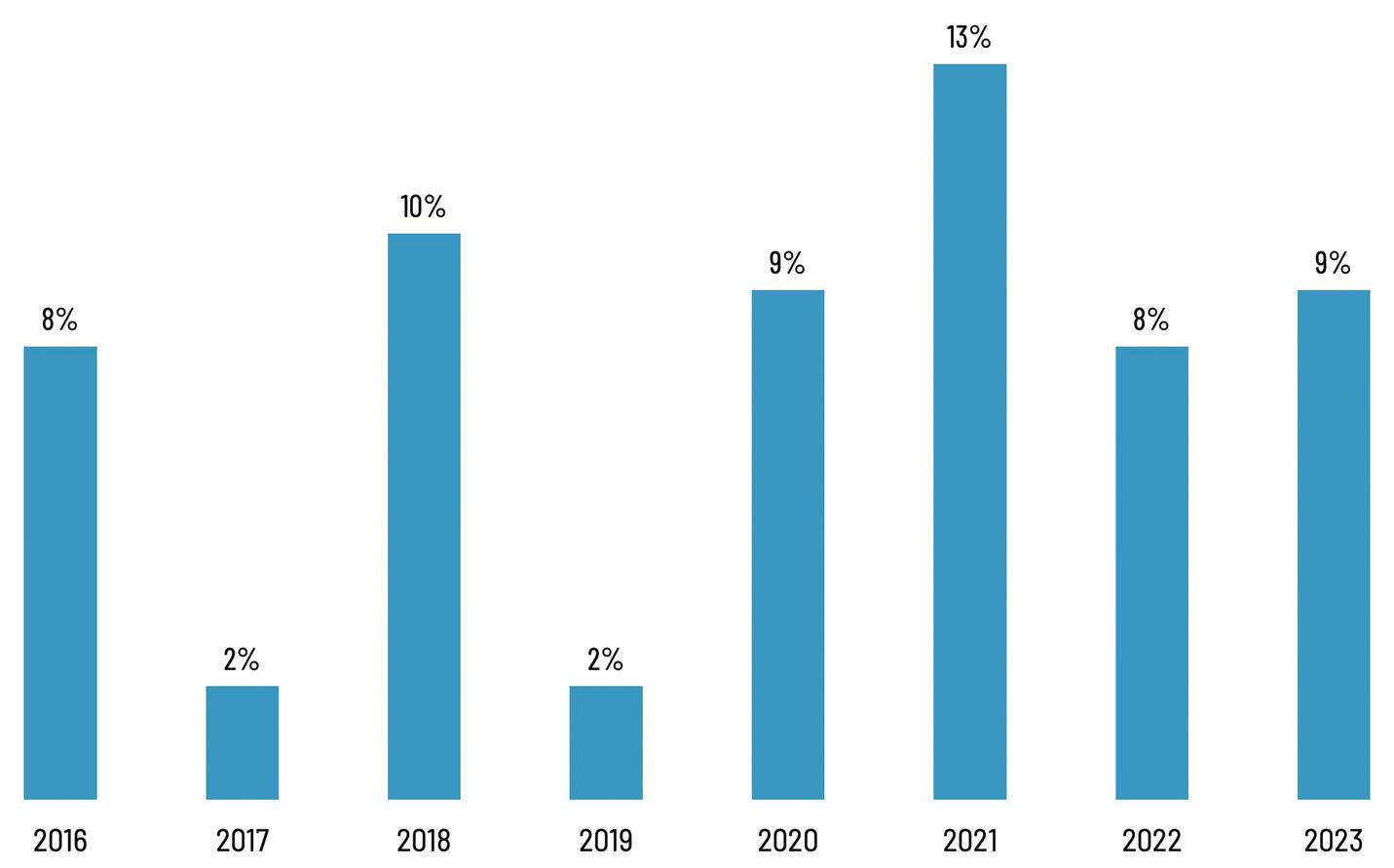
Figure 1: “Adding packaging capabilities” as a new business opportunity. Source: WhatTheyThink Print Business Outlook surveys, 2016–2023.



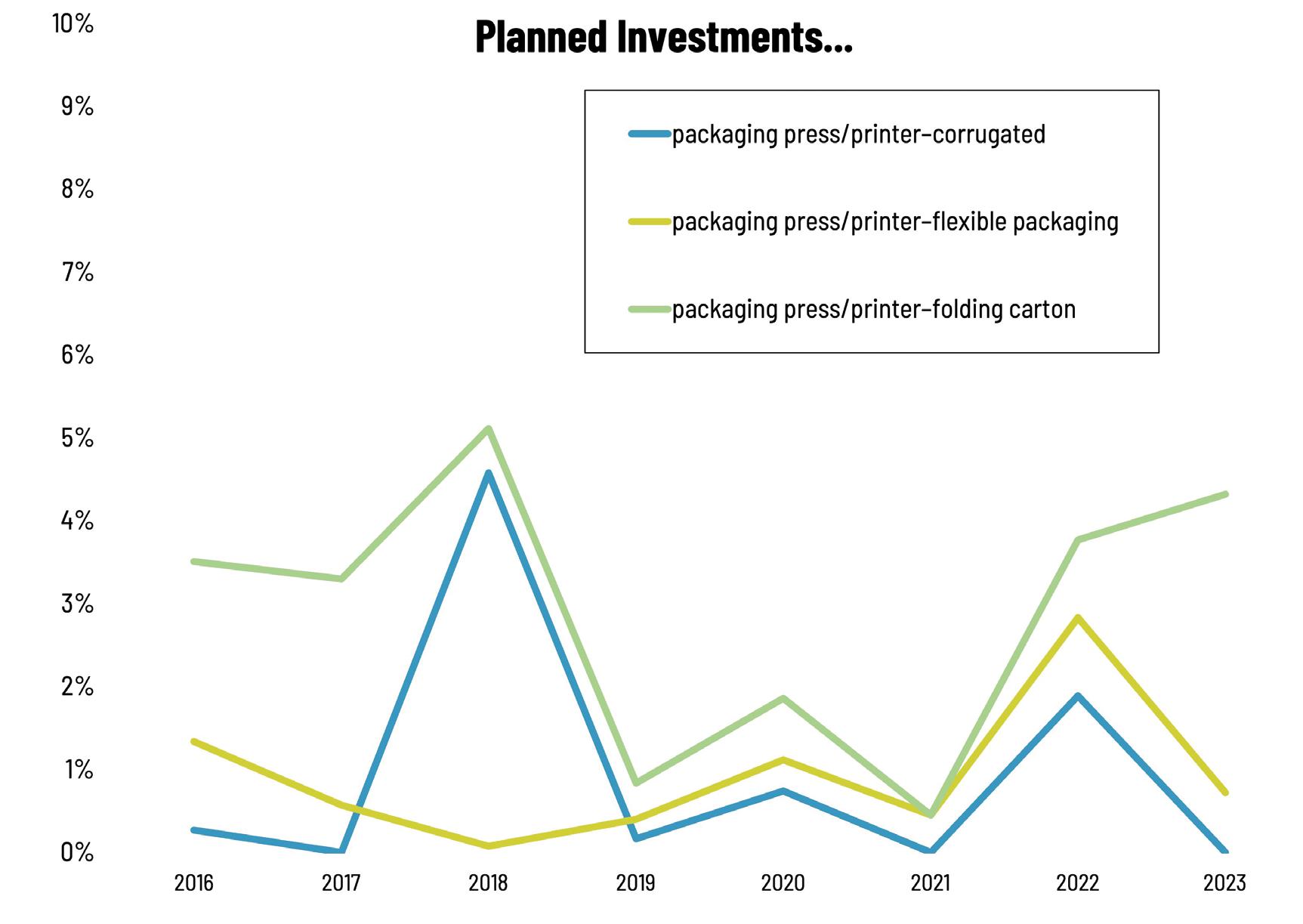
Figure 2: Planned investment in assorted packaging equipment. Source: WhatTheyThink Print Business Outlook surveys, 2016–2023.
pandemic led a lot of print businesses to look at new areas to expand into. It’s been 8–9% in the two years since. (By way of comparison, at its height, “adding wide-format capabilities” ran close to 20%.) So it is of some, if not overwhelming, interest.
If we look at planned equipment investment by type of packaging (see Figure 2), folding carton printing equipment has led the pack by a slight amount, but even that only ever peaked at 5% of survey respondents. Corrugated equipment spiked in 2018 at just over 4%, but has remained half that level ever since. Flexible packaging had a peak in 2022 at 3%, but has generally been about 2% or under.
Every few surveys, we try to gauge the extent to which print service providers are branching out into new product and service areas, if they had already added those new products/services, and, if not, if they had a time frame for adding them—or if they
were even on their radars at all. How did packaging fare? We asked about corrugated, folding carton, and flexible packaging.
For corrugated packaging (see Figure 3), in 2023, 9% said they had added it more than two years ago, with another 6% planning to add it in the next 18–24 months. Twelve percent added it in the mid to late 2010s, and 10% added it in the mid 2010s. Two-thirds have no plans to add corrugated packaging capabilities.
As the investment data suggested, folding carton is of a bit more interest (see Figure 4), with 14% saying in 2023 that they had already added folding carton printing capabilities. (Looking at previous years, 18% added it more than four years ago.) Twelve percent say they plan to add it in the next 18–24 months, and 58% say they have no plans to add it.

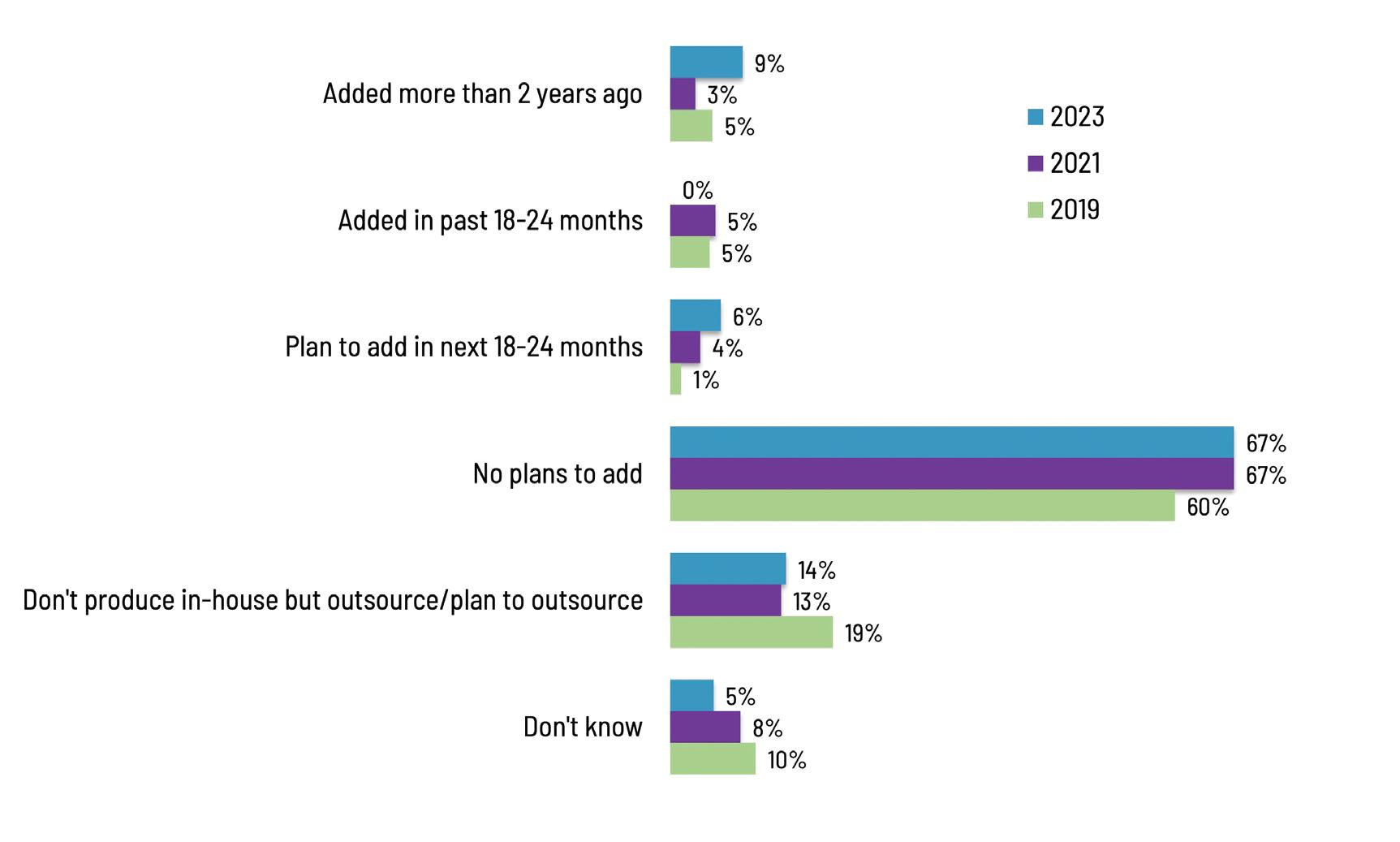
Figure 3: Interest in corrugated packaging. Source: WhatTheyThink Print Business Outlook surveys, 2019–2023.

Figure 4: Interest in folding cartons. Source: WhatTheyThink Print Business Outlook surveys, 2019–2023.

5: Interest in flexible packaging. Source: WhatTheyThink Print Business Outlook surveys, 2019–2023.
As for flexible packaging (Figure 5), that is the least compelling of the three, with (in 2023) only 5% saying they had ever added it, and 5% say they have any plans to add it. (Thirteen percent added it more than four years ago.) In 2023, a good three-fourths of commercial print businesses had no plans to add flexible packaging printing capabilities.
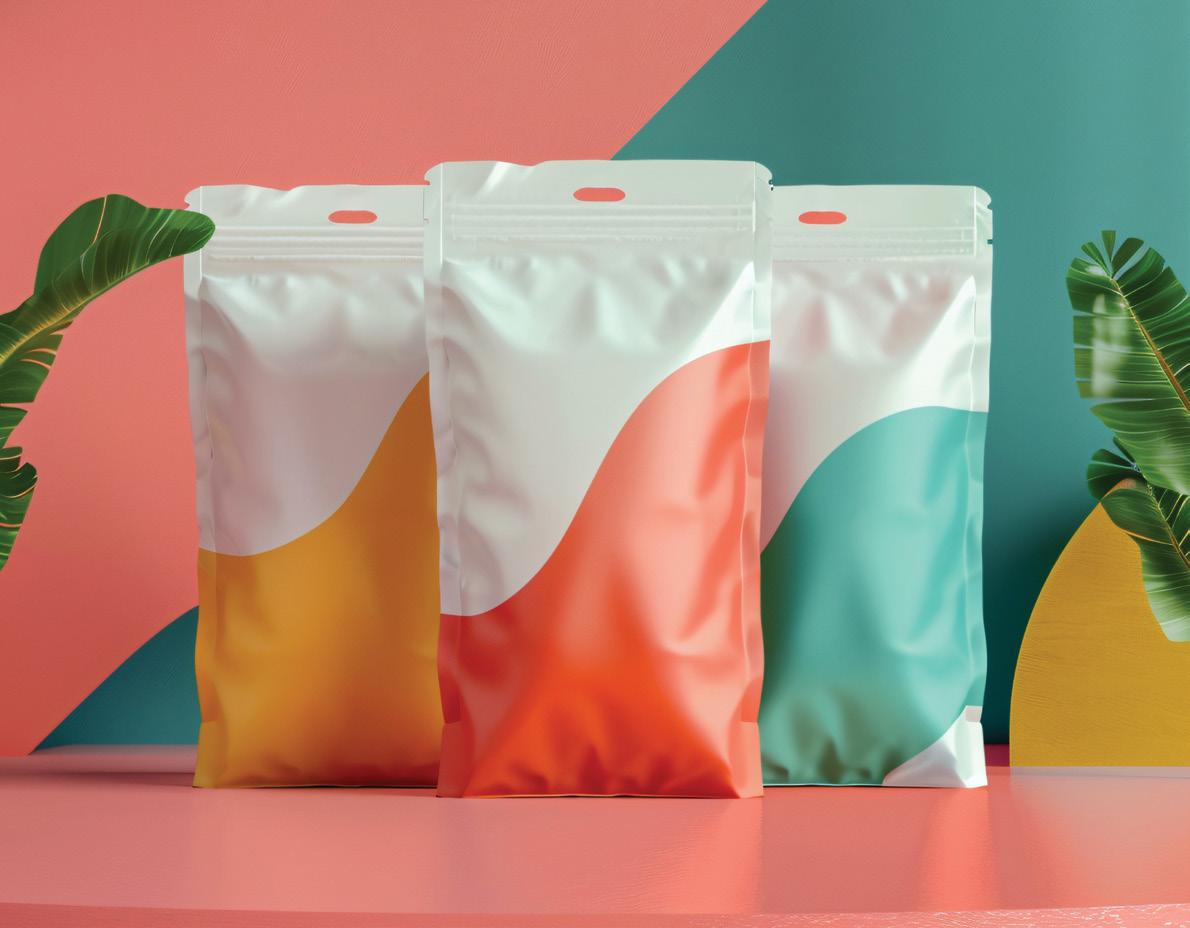
There are reasons why expanding into packaging might not be as compelling a proposition as, say, wide format was back in the day. The big reason is not necessarily technological; at the end of the day, it’s still mostly putting ink on something which is what printers do. It’s usually more a question of getting in the door to those who require packaging. For big consumer brands, their packaging converting processes are almost akin to trade secrets, and as a result they stick with trusted partners. The sweet spot for commercial printers looking to get into packaging are the smaller, local, more boutique brands, who have packaging needs that are far more modest than the P&Gs of the world. Think about the local makers of salsa, hummus, maple syrup, potato chips, etc., who need small numbers of boxes to ship their wares to farmers markets or local grocery stores. And even big regional grocery chains increasingly have a “buy local” section.
Packaging doesn’t need to be some undiscovered country from whose bourn no traveler returns, nor need it puzzle the will. It just requires the will to explore it.
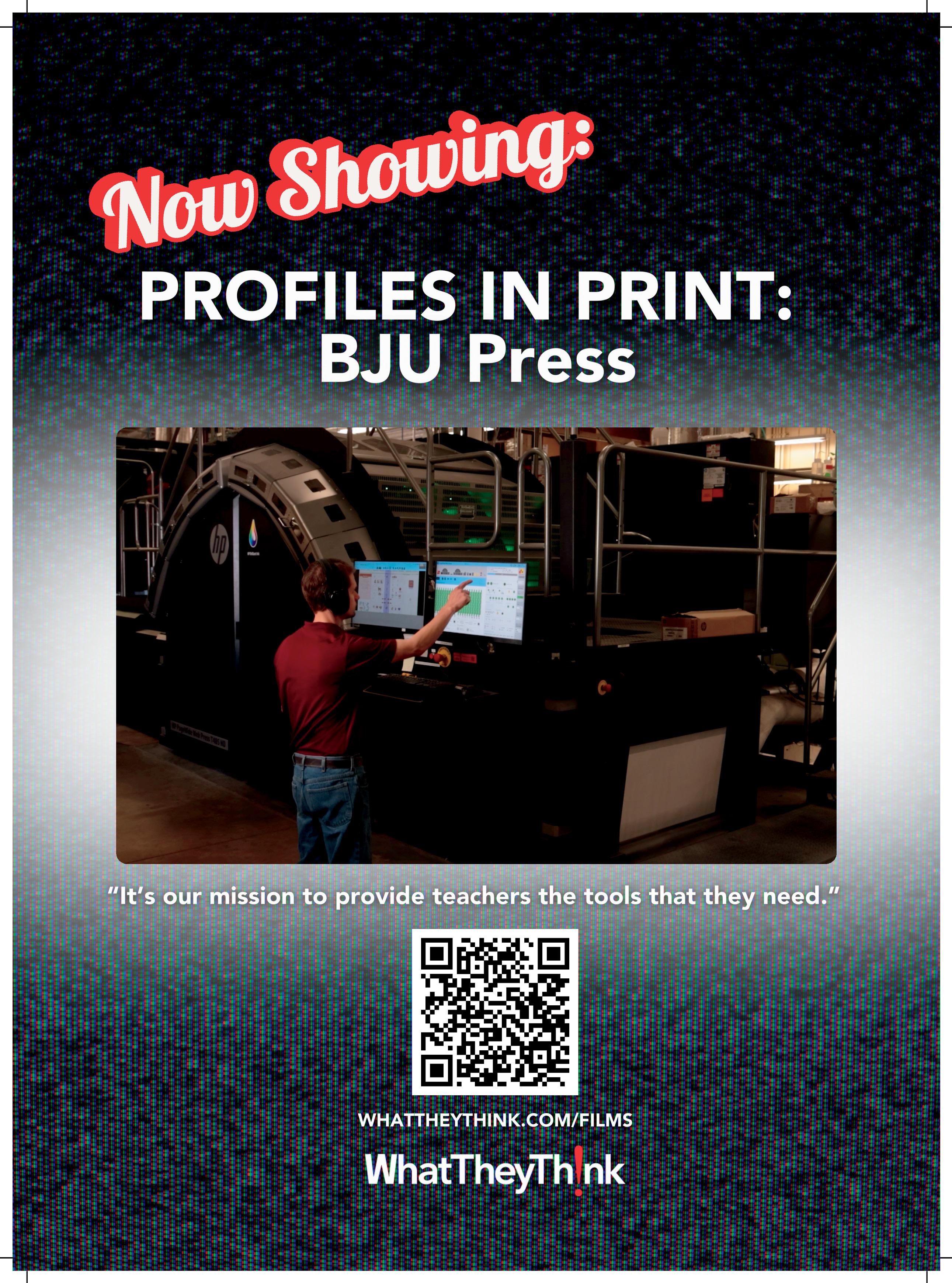
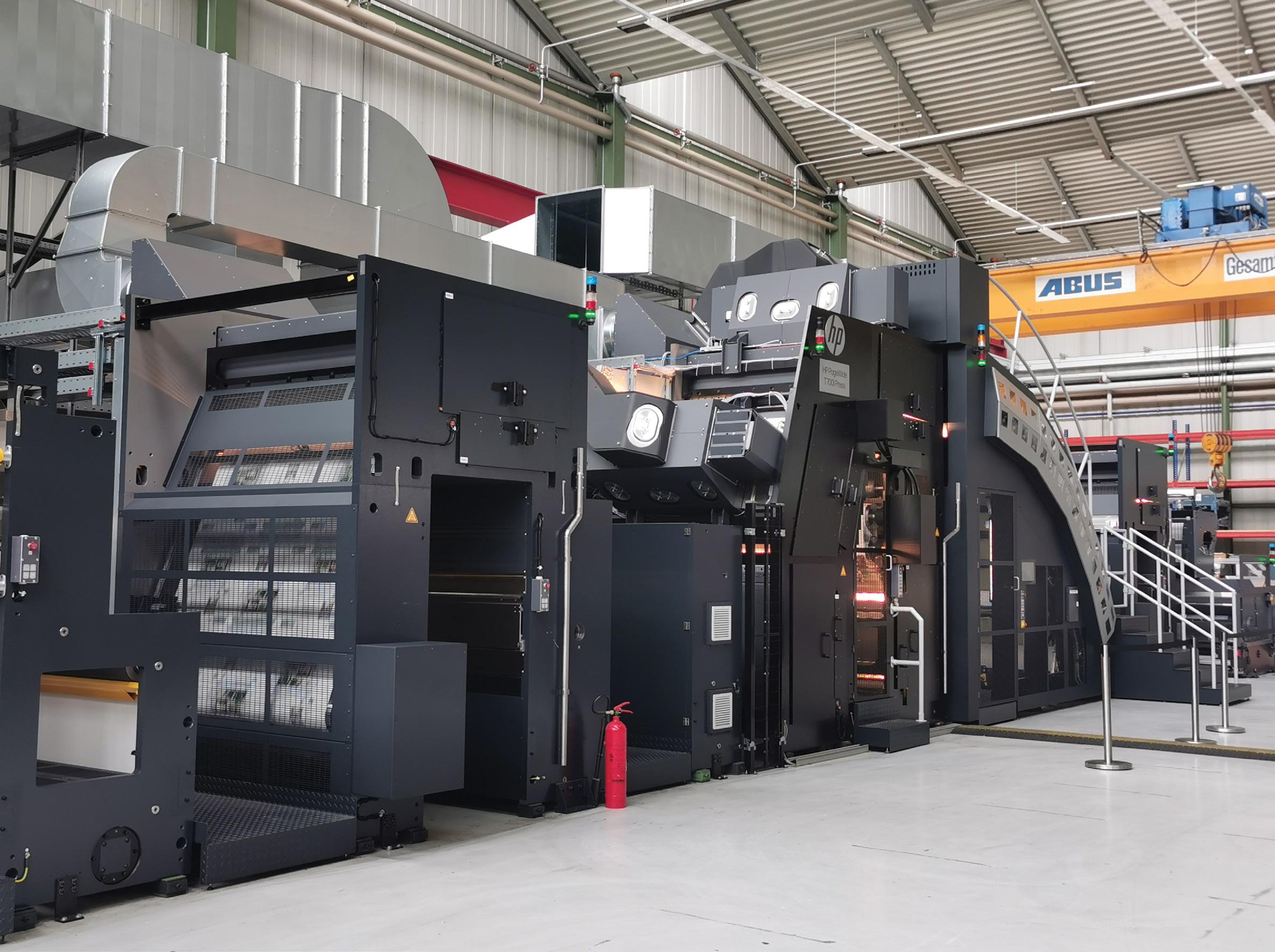
BY DAVID ZWANG
All HP PageWide production inkjet presses have much in common, for example all use the HP Scalable Printing Technology which includes HP thermal heads and inks, but that oversimplifies their similarities and differences. At an absolute minimum, they differ in the applications they are developed for. Many of the ubiquitous PageWide T series and Advantage 2200 presses are targeted at commercial printing applications.
There are also PageWide T series packaging presses, that were initially developed for high-volume digital preprint corrugated production. The first PageWide T Press for packaging was introduced
with the 42-in. print width PageWide T400S press on an adapted T 400 Series platform and introduced in 2015. They followed this up with the 110-in. print width T1100S, which was announced in 2015 on a new platform produced in conjunction with Koenig & Bauer. These simplex full-color presses targeted litho-lam top liners for high-volume corrugated packaging. As the demand for digital packaging increased, HP introduced their C500 postprint corrugated press at drupa in 2016 as well. With eighteen T series corrugated presses currently installed, HP and their customers developed a better understanding of what they require, and it was evident that there was a need for a 67-in. press
that split the difference between the two existing preprint platforms. Enter the PageWide T700i.
Like the T1100 series, the T700i transport is developed by Koenig & Bauer with an imaging engine developed by HP. It is fitted with the latest HP PageWide Gen 5 thermal printheads which are enabled by 1200 nozzles per inch and 8X nozzle redundancy to maintain high print quality and text readability down to four-point type, delivering sharp text, barcodes, and smooth tone transitions.
The T700i is designed to achieve consistent six-color offset quality graphics across a range of coated, uncoated, brown kraft, and recycled packaging papers with HP Bonding Agent and HP Priming Agent. To ensure the output quality, there is an inline process control (IPC) unit that monitors output and alerts the operator if there are issues. It prints with the same six HP A30 aqueous ink colors (C,M,Y,K,O,V) that are also used on the T1100 series and T400 series packaging presses, providing a wide color space and vibrant brand colors.
Importantly, the HP A30 Water-Based Inks, HP A50 Bonding Agent, and HP P36 Water-Based Priming Agent are 100% free of UV-reactive chemistries to meet brands’ packaging safety requirements for sensitive products with non-contact packaging. They pass odor and flavor test requirements for food packaging and are positioned to comply with various global regulatory guidance for indirectcontact paper based food packaging. It has also achieved UL Sustainable Product Certification, which demonstrates that they meet a range of stringent criteria related to human health and environmental considerations.
The T700i can print on a wide range of media weights from 80 to 250 gsm, and up to 500 gsm in certain configurations. It uses dual printhead paper spacing (PPS) to move the heads between two different distance positions from the media to support uneven surface media types. The T700i is
capable of printing at up to a 1000 fpm, although it does need to slow down for very heavy ink coverage which they consider 140 nanogram, or two and a half drops per pixel. Most of their existing T1100 series customers are printing regularly with the same printheads and ink at 1000 fpm.
In order to support that wide range of packaging media, the press includes a priming unit which applies a flood coat before the print engine using an analog roll. This also provides excellent durability and gamut extension. Like all of the other HP T presses, you can use a bonding agent that is just printed underneath wherever a color drop will be printed, as well as ColorPRO media where the chemistry is applied at the mill to enhance the printing. Of course, since some of the media can be rough and “dirty,” there is an integrated web cleaner to prepare the media for printing.
Like its predecessors, the T700i is well-suited for the litho-lam market that falls into the range of 64 to 66 in. wide. However, the T700i is not just a press for digital preprint corrugated production, it is also designed for narrow corrugation applications and folding cartons. Folding carton production is expected to grow at a CAGR of 14.38% through 2027 in constant 2020 prices, according to Smithers reports, with digital print production growth projected at a CAGR of 86.33%. Today most high volume folding carton production is done with offset and flexo presses that print in widths somewhere between 55 to 67 in. Increasingly with sustainability concerns, CPGs are moving to paperboard, especially in Europe as well as other regions around the world because it has a very good recyclability rate. With the capabilities of litho-lam, narrow corrugation and folding carton production, this is really a Swiss Army Knife of box print production.


In order to accomplish this, they partner with other manufacturers, and in the case of the T700i, since it supports a number of application types, they have been working with partners to develop complete solutions. A sampling of some of those partners is in the diagram above.
HP has historically focused on application-based solutions and builds an ecosystem to support what is required in the each of the application spaces, now including the folding carton space as well. Many configuration options are available to address specific printing requirements.
As we know, the more jobs you touch in a day, the more complicated it is to get them through the production environment, so HP provides a number of workflow solutions to help. HP PrintOSx for Corrugated includes the Print Beat app, which monitors your press’ performance and provides you with information that allows you to act on real time and historical data-driven insights to improve print operations. It also includes the Resource Manager

to centrally manage other devices like DFE’s in your plant, and PrintOS Box, a cloud-based file exchange app, as well as other utilities.
HP worked with Hybrid Software to create the HP One Package Preprint Workflow Suite, which optimizes the packaging print workflow. The HP One Package Preprint Production Module is software supplied with the press that enables HP webfed presses to be integrated with ERP systems, corrugator planning systems, prepress systems, etc. At the core is Hybrid Software’s Cloudflow rule based pipeline solution. This provides the ability to create an optimized corrugated workflow to achieve streamlined production. HP One Preprint and Postprint packages work with industry leading partner solutions that were carefully selected, vetted, and substantiated by HP. For example, HP One Package can add production marks that can be read by converting solutions such as sheeters, laminators, or corrugators ensuring that digital reels with multiple jobs can be converted efficiently with minimum waste. One Package also connects with inspection systems and reel editing systems to
provide automation of their functions and provides feedback to enterprise resource planning (ERP) or logistics systems. Since 2014, the HP One Package Workflow Suite has shipped to help customers transition jobs to digital. With this open platform, you can integrate through protocols, APIs, and other consulting and integration services.
The T700i is a designed to target several different applications in the packaging and paper based packaging market, including corrugated and the expanding folding carton market. With this new optimized size, if your applications doesn’t require the larger size of the T400 or have the budget for a T1100 series press this is an excellent option.
The first HP PageWide T700i Press will be installed at Pratt Industries in the U.S. the third quarter of 2024. As a current T470 customer, this will be a welcome and targeted addition to their production options. The T700i is attracting considerable interest and is currently available for preorder and will be commercially available in late 2024.




Diversified Nano Solutions creates custom inks and fluids for high-security track and trace applications for various markets throughout the industry. They have also introduced a biomarker technology called Inkcrypt. Mary Schilling spoke with Bruce Carne, director of business development for Diversified Nano Solutions, about the company’s range of inks and its biomarker technology.
WhatTheyThink: Tell us a little about the custom inks and fluids you develop.
Bruce Carnes: We’re focused on developing specialty pigments and dyes, and we developed a few aqueous-based fluid inks for digital inkjet on-demand. These fluids include MICR—magnetic ink character recognition—typically used on checks or lottery tickets around the world. We also have a UV fluorescent, which is used for security and anti-counterfeit applications. The UV fluorescent inks are visible with a 395-nanometer (nm) black light. In addition to that, we have an infrared ink that can be detected with an infrared camera.
We’ve also developed a biomarker technology called Inkcrypt. This is an optional add-on to all our fluids but is also available for other users’ fluids as well. Inkcrypt adds a biomarker to the fluid that is unique to the customer, providing them with a signature ink. Customers can test their printed products on-site with a simple swab test; so field checks are simple. Inkcrypt can be used with any fluid or ink technology, including offset or flexo and it can be brushed, stamped, or even sprayed on.
WTT: So you develop it for dye pigment, UV for inkjet, and you can create custom CMYK colors that have this kind of technology in it?
BC: Right. We can add the biomarker to any fluid, including all our finished inks.
WTT: So the media doesn’t matter because that’s being created by the ink company. You sell this fluid that the ink company has put into the ink.
BC: The biomarker can be available for the end user’s fluid, or of course, it could be an option to be added to our fluid as well.
WTT: So let’s jump a little bit more into the biomarkers, because that kind of gives me goosebumps. So you’re telling me that it’s a custom DNA string that you create that goes into any custom ink, dye, pigment, MICR, UV, spot, or any CMYK combination that will create a custom mark for that piece—and that piece can be traced throughout the entire system.
BC: Yes, through the supply chain or track/trace. The user signs up and they’re assigned their own biomarker, which only they can get, either from us as a replenishment or a first-time shipment, and then they could add it to their fluid.
WTT: Does it take my blood to make it?
BC: No, it’s a synthetic DNA. So, no, it’s plant-based.
WTT: Most of the time, when you get a check, you don’t realize the detail and the complexity that goes into it to make sure that it is not counterfeit. Tell us about some of the other markets that you create these biomarkers for.
BC: All of our inks are used on industrial production platforms, from large web presses used by some of the major manufacturers, all the way down to smaller desktop systems for small businesses that want to use this technology.
WTT: So are we talking food, pharma? We know currency, and the high-security items, but let’s dive more into the packaging we use every day. Because we know in this day and age, security of packages and the track and trace to make sure that we know what has been manufactured is truly what we have in our hands are very important.
BC: It could be used in the packaging and label industry. It could also be put on the actual physical products themselves.
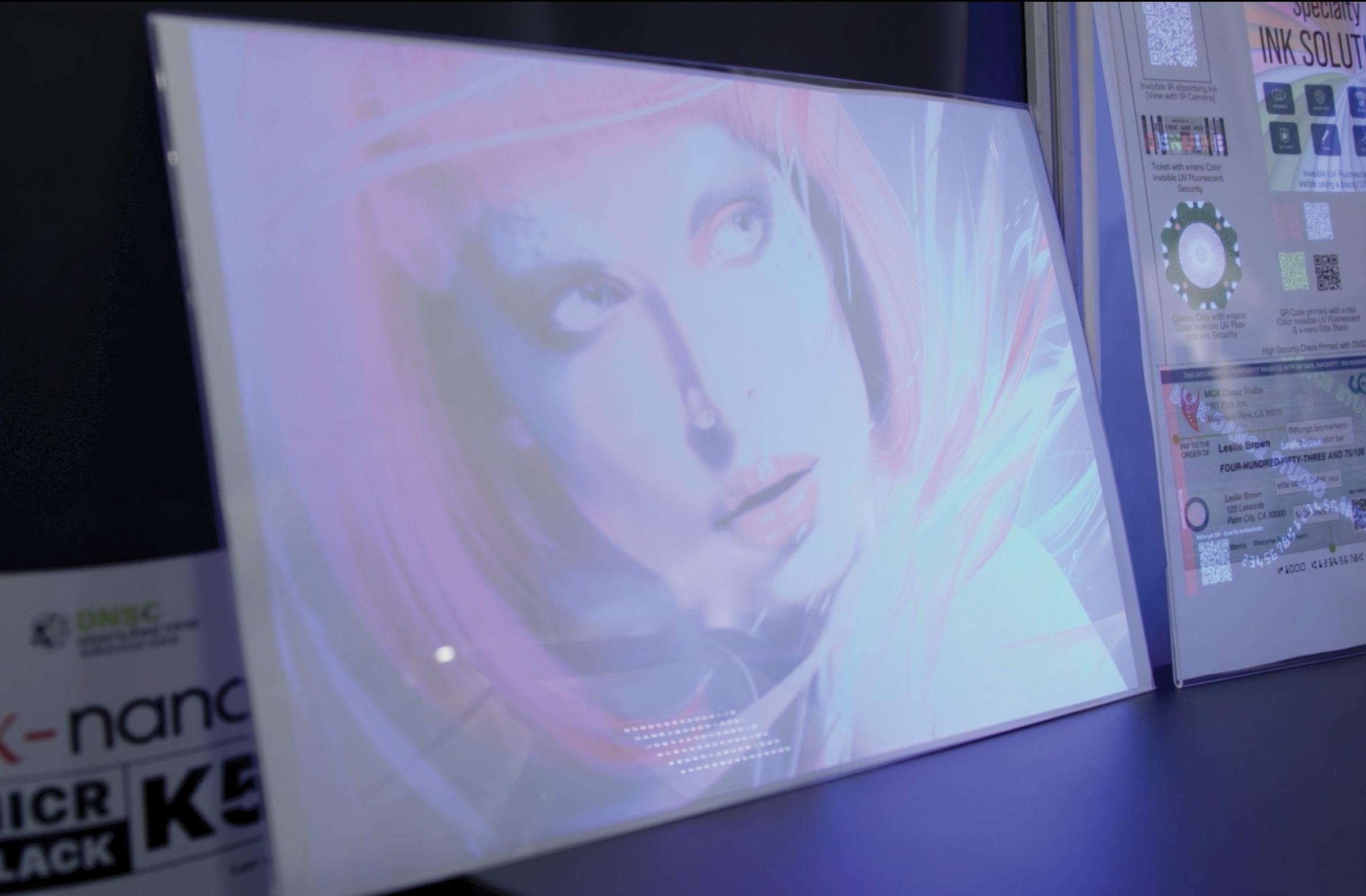

BY KEVIN ABERGEL
Digital embellishments have revolutionized the printing industry, offering new possibilities for enhancing printed materials with visually striking and tactile effects. These techniques, particularly those based on inkjet technology, have gained significant traction in recent years due to their versatility and cost-effectiveness for short runs.
The printing industry has long relied on standards to ensure consistency, quality, and interoperability across various processes and technologies. These cover things like color management, file formats, data exchange and print quality. However, the rapid advancement and sophistication of digital embellishment techniques has outpaced the development of corresponding standards, creating a gap in the industry.
This is increasingly problematic as digital embellishment becomes more prevalent. It affects quality control, hinders widespread adoption, and potentially impedes innovation.
This article aims to establish whether there is a need to create standards for digital print embellishments, and if so, who should lead this effort and what should these standards cover?
“If a child takes this printed piece and puts it in their mouth, we need to make sure it cannot cause any harm.”

Cheryl Kahanec CEO of Quantum Group
The printing industry has a long history of standardization, with organizations like the International Organization for Standardization (ISO), APTech (CGATS, B65), ICC, Printing United (G7), Fogra, Ghent Workgroup etc., playing crucial roles. These standards have been instrumental in ensuring quality assurance, interoperability, and consistency across different printing processes and technologies.
Cheryl Kahanec, CEO of Quantum Group, a large commercial print, fulfillment and mailing supplier based in Morton Grove, IL, emphasizes that certifications play a crucial role in printing, especially in regulated sectors like pharmaceuticals. The landscape of required certifications has evolved, she says, with a growing emphasis on environmental and safety standards. “Those types of certifications are not any longer just... whether you have recycled
content,” she adds, underscoring the need for printing companies to adapt to the compliance requirements of their clients.
She points out that “there are no real certifications, no real standards,” in digital embellishment, which poses challenges for brands. Cheryl also highlights the potential risks, particularly for products aimed at children, stating, “If a child takes this printed piece and puts it in their mouth, we need to make sure it cannot cause any harm.” She believes that as the market matures, “we’re going to start getting picky,” and anticipates a future where digital embellishment processes will require certification similar to traditional printing standards."
The lack of standards makes it difficult for designers and brands to adopt digital embellishments widely, as they cannot ensure consistent results across different providers or regions. This also creates inefficiencies in supply chain and production processes.
Some argue that the lack of standardized terminology is creating confusion and potentially slowing down the adoption of these innovative technologies. Sabine Lenz, founder of PaperSpecs, an online hub for graphic designers and brand owners who print, highlights this issue. “We’re confusing them,” Lenz says. “And the more we confuse them, the fewer decisions they will make for print and print embellishments. We all know a confused mind doesn’t make any decisions.”
The problem stems from the fact that different manufacturers and printers often use their own branded terms for similar technologies. Lenz explains, “One designer was looking for soft touch coating, and her printer calls it ‘velvet touch coating.’ And where’s the difference? There is none, it’s marketing.”
This extends beyond just coatings, Lenz adds, “There is cold foil, my printer has cold foil. What is that? Or, oh, my printer has Lux FX or they have glaze. What is that?” These varying terms for similar processes may lead to unnecessary confusion and hesitation among designers.
This not just an inconvenience; it’s potentially hindering the adoption of digital print embellishment technologies. Lenz asserts, “We want people to buy
“We want people to buy print, but on the same hand, we’re confusing them with all the different wordings and the different terminologies that we’re using."

Sabine Lenz PaperSpecs Founder
print, but on the same hand, we’re confusing them with all the different wordings and the different terminologies that we’re using.”
The solution, she feels, lies in clear, concise education about these technologies and their benefits. “We as an industry cannot expect designers to drop just about everything to learn whatever fancyschmancy terminologies we come up with,” she says.
David Stevens, Senior Manager of Product Development at gaming card publisher Wizards of the Coast, says: “I do think that at some point in time that there’s there needs to be a standard nomenclature on how we refer to this. I think that that’s probably the first need.”
Amnon Naschon, who spent more than a decade at Shutterfly in senior roles including Senior Director of Research and Development, played a key role in introducing digital embellishments to the company’s product offerings. Shutterfly conducted focus groups to determine optimal embellishment characteristics, informing his practical approach to standardization.
He says there is no question that standardization would be beneficial to end customers tying to produce the best holiday cards, Photobooks or any other embellished output. As for what these standards should cover, he suggests three or four attributes that would improve customers’ overall satisfaction with the product.
These include the height of the polymer, the shininess or gloss levels, and the characteristics of foils used in embellishments. He proposes creating standardized levels for these characteristics.

“There is way too much lingo that is not clear to the customers.”

Amnon Naschon Previously worked as Senior Director of Research and Development at Shutterfly
Naschon also notes the confusion caused by inconsistent terminology, stating, “There is way too much lingo that is not clear to the customers.”
He suggests developing standardized terms and definitions for different embellishment techniques and effects.
He also highlights the need for guidelines on the strengths and limitations of digital embellishment technologies, drawing a parallel to the RGB versus CMYK color models. This approach, he believes, would help designers and brands better understand and utilize digital embellishment technologies effectively, ultimately driving adoption and innovation in the field.
If standards for digital print embellishments were to be adopted, they would likely encompass several key aspects of the printing process.
A standardized terminology would be crucial for consistent communication of embellishment techniques and effects across the industry.
Standards could include file formats, such as standard names for embellishment layers within PDFs. There could be guidelines for font sizes and weights or thicknesses suitable for various embellishment techniques, ensuring readability and quality.
Paper and other substrate types and their compatibility with different embellishment methods could be categorized for guidance on which work best with specific effects. There could also be specifications for foils, such as metallic gold and silver, detailing their appearance and reflective properties and optimal application methods.
Scodix acknowledges the need for standards in digital print embellishments but recognizes the complexity too, due to the diverse technologies and materials involved. April Lytle, Brand Manager for Innovation, highlights several areas where standardization could be beneficial, with terminology being a primary concern: “The biggest thing is, do we call it varnish? Do we call it polymer? Do we call it something else? It’s the clear effect that has the biggest controversy, I think, behind what it’s going to be called.”
As for what could be standardized, Lytle suggests focusing on foil appearance across different application methods: “I think going through and standardizing like the density in the shade of foil after it’s applied could be super-helpful.” She also proposes establishing universal color codes for specific effects in file preparation: “Maybe clarifying, for example, for gold, use 100% magenta mask’ or ‘for clear use, 100 percent cyan mask,’ making that a little bit more universal.”
“The biggest thing is, do we call it varnish? Do we call it polymer? Do we call it something else? It’s the clear effect that has the biggest controversy, I think, behind what it’s going to be called.”

April Lytle Brand Manager for Innovation, Scodix
However, Lytle notes that substrate standardization is particularly challenging, due to the variety of materials and their interactions with different embellishment technologies. She suggests that creating comprehensive standards would require collaboration among industry players: “You would have to have the major players all sitting around a circle in this table working together to create something like that.”
Nick Bruno, CEO of Harris & Bruno International, highlighted the critical need for objective, datadriven standards in the digital print embellishment industry. “Standardization is not just about maintaining uniformity; it's about leveraging data to drive quality and innovation,” Bruno stated. “By establishing clear metrics for elements such as foil adhesion and detail resolution finesse, we can ensure that brands can expect consistent, highquality results across various substrates, including the often-challenging uncoated papers.”
Bruno also acknowledged the complexities involved in enforcing these standards across different manufacturers. “One of the biggest challenges we
“Standardization is not just about maintaining uniformity; it's about leveraging data to drive quality and innovation."

Nick Bruno CEO of Harris & Bruno International
face is ensuring that these standards are universally adopted and enforced,” he explained. “It’s essential that we have a unified approach to measuring key aspects of material compatibility. This will not only enhance the reliability of our products but also foster greater collaboration and trust within the industry.”
Standardization of descriptive language would play a crucial role in enhancing the digital print embellishment process in several ways:
1. Consistent terminology: it would establish a common vocabulary for describing embellishment techniques, effects, and materials across the industry. This would reduce miscommunication between designers, printers, and clients.
2. Improved workflow: standardized terms would help to ensure that everyone from client to design to production understands exactly what embellishments are being requested and how they should be applied.
3. Quality control: standardized terminology would make it easier to define, measure and compare different embellishment techniques.
4. Automation: a standardized descriptive language could facilitate the development of automated systems for interpreting design files and setting up embellishment processes, reducing errors and increasing efficiency.
5. Training and education: standardized terminology would make it easier to develop training materials and educational programs, so new professionals would learn a consistent set of terms and concepts.
6. Cross-platform compatibility: a standardized descriptive language could help ensure that embellishment requirements are interpreted consistently across different software and printing systems.
7. Client communication: It would provide a clear, standardized way to describe embellishment options to clients, helping them to better understand the possibilities and make informed decisions.
The question of who should lead the standardization efforts is complex and multifaceted. Industry bodies such as the Digital Embellishment Alliance, the Association for Print Technologies (APTech, owner of WhatTheyThink), PRINTING United, Ghent Workgroup and others could play a significant role, leveraging their experience in developing and implementing standards across various industries.
The Foil & Specialty Effects Association (FSEA) has nearly 300 members, including active practitioners and industry suppliers. It plays a crucial role in educating and supporting companies involved in graphic arts finishing.
To address the unique challenges and opportunities presented by digital embellishments, the FSEA formed the Digital Embellishment Alliance about two years ago, recognizing “the differences on that side of the embellishment tree.”
Jeff Peterson, Executive Director of FSEA states, “We can drive standardization of terms and definitions as an association.” The FSEA sees inconsistent terminology as a significant issue, with Peterson saying, “Standardizing and defining the terms used in digital embellishments can help educate the industry and eliminate confusion.”
“Standardizing and defining the terms used in digital embellishments can help educate the industry and eliminate confusion.”

Jeff Peterson Executive Director of FSEA
started, it doesn’t mean it’s finished.” The FSEA views standardization as an ongoing process, with Peterson also highlighting the need to clearly define what constitutes an embellishment in the digital realm.
While FSEA certainly has the experience and knowledge of embellishment, APTech has ANSI accreditation to support national and international standards development, so its standards can be accredited, as well as having the ability to reach a wide audience with its recent acquisition of WhatTheyThink. Perhaps the best course of action would be a joining of forces that could bring both sides together for the betterment of the industry.
The need for standards in digital embellishments, particularly those based on inkjet technology, is clear. The benefits of standardization—including improved quality control, increased market adoption, and facilitated innovation—outweigh the challenges of developing and implementing these standards.
Without a common terminology and associated standards, digital embellishment manufacturers and users may not be able to develop their markets adequately and run the risk of losing out on mainstream adoption.
Moving forward, it is recommended that the industry takes a collaborative approach to standardization, involving key stakeholders from across the value chain. A consortium approach involving diverse stakeholders, including industry bodies, leading manufacturers, brands and perhaps government agencies, could ensure that the resulting standards are practical and widely accepted.
By establishing a common language for describing digital print embellishments, the industry could significantly improve communication, efficiency, and consistency in the embellishment process. This would benefit designers, printers, and clients alike by reducing misunderstandings and ensuring that the final product matches the intended design.
While he acknowledges the potential for more comprehensive standards in the future, he sees terminology standardization as the crucial first step. He suggests, “Standardizing terminology can go a long way in helping the industry. Once it’s
A standardized framework could also facilitate innovation by providing a common ground for technological advancements. This could encourage collaborative development and industry-wide progress, rather than siloed innovations by individual companies.






Users can design and order printed products through an open print ecosystem
BY CARY SHERBURNE
In 2015, Adobe launched Adobe Express as an ease-of-entry application making it easier for creatives to design a wide range of materials. According to Aubrey Cattell, Vice President of Developer Platforms for Adobe, “We realized there's a large audience of people who wanted to communicate their ideas visually, but maybe didn't have the time or the expertise to take on the incredibly powerful applications that comprise Creative Cloud, applications like Photoshop and Premier Pro InDesign and Illustrator. These are best-in-class applications for digital imaging, digital video, vector-based design, and more. But the reality was, there was a market that was overserved by some of those applications and wanted something that was, faster and easier, and maybe a little bit more fun, just to get started with.”
Adobe Express was great for those users, especially when they were creating digital assets. But printing could be problematic. They could easily make a PDF, but then had to figure out how best to get their creations printed.
Now, Adobe has streamlined that process, initially for users located in the United States, but with plans to expand to other geographic regions. Users can create content, and when print is required, they can now simply choose print. The launch partner for print is Zazzle; when users access the Adobe Express Print and Deliver function, they will note that it says “Powered by Zazzle” in the lower right-hand corner.
Cattell adds, “We wanted that to be just an end-toend and seamless experience. And so my team has enabled the APIs so that print works as an endto-end experience. And then, our launch partner is Zazzle, and they're set up now to help us offer a white glove experience that takes users all the way through to the order and the packaging, all of which is very much branded Express every step of the way
so that we really could control that experience. But the way that we set up the platform was as an open ecosystem. So those same APIs are available to any print partner who wants to build an integration with Express; they can basically create an add-on that can be part of our growing marketplace of add-ons that users can take advantage of. Two examples that are already in our marketplace are Pixels.com, which enables print on demand; and PrintReady from Silicon Publishing, which enables export for print production integrators. And we expect from here that our marketplace will continue to grow as other print partners build on our platform.
“The way that we set up the platform was as an open ecosystem. So those same APIs are available to any print partner who wants to build an integration with Express."
Aubrey Cattell
Vice
President of Developer Platforms Adobe
Cattell noted that Adobe believes there is a great deal of room for innovation by the partner ecosystem, in turn creating user choice for Express users. He also explained that Adobe Express is a tiered freemium application, with a free version, a premium version, and an enterprise-level solution. The enterprise solution enables enterprises with thousands of employees to deploy Express to their entire base. Adobe Express is completely cloud based, running in browsers, or on Android and Apple devices.

https://helpx.adobe.com/express/share-and-publish/share-and-collaborate/print-ready-templates.html
Adobe’s AI solution, Firefly, is also integrated into Adobe Express, giving users interesting ideation and creation options that make their work even easier. This includes text-to-image, creating images with text prompts; and text-to-design, producing more sophisticated images, vector-based graphics, and topography. He also explained that there is seamless interaction between Adobe Express and Creative Cloud, enabling, for example, design professionals to design templates in Creative Cloud that can be used in Express to maintain brand integrity, among other things.
In preparing this article, we also talked to Charles Ohiaeri, Chief Fulfillment Officer at Zazzle, to get an update on Zazzle as well as its role with Adobe Express.
Ohiaeri explained, “Zazzle is a technology platform that merges makers, creators, and customers using a series of tools that we've developed over the past few decades here. Customers are probably most familiar with us in our marketplace. That's been their opportunity to engage, to have products created and fulfilled, everything from apparel to skateboards, hundreds of product lines all across the board. My responsibilities here have been around the network of makers that we've built globally that really power our platform on the make side of things. So when any customer requests a product to be fulfilled that was designed by a creator or they created on their own, that request is parsed out into a series of
instructions. And it ultimately ends up in the custody of one of our partners globally. They produce, they fulfill, and ideally, as close to the customer as we can get. That's us in a nutshell.”
In terms of the Adobe Express partnership with Adobe, Ohiaeri indicates Zazzle saw it as an opportunity to foster further merging of makers and creators together in a meaningful way, adding, “There are a lot of reasons why our tools paired with Adobe’s tools are a winning equation. This includes supporting our creators and allowing them to monetize their work or just exercise their creative liberties with newer products. We also think it is a way for makers to have access to millions of creators around the world, bridging the two together. Adobe is a great partner, and it’s a huge net win for all three communities: creators, makers, and customers. Before print was integrated into Express, just think about having to find a maker, transport that PDF, sizing it, dealing with all kinds of calibrations, all the formatting, all the details required to get a successful product. And now with us, it’s instantaneous in a way that’s structured so our makers can be successful.”
Editor’s Note: View the full Adobe interview at https:// whattheythink.com/video/120384-adobe-addsintegrated-print-function-adobe-express/; view the full Zazzle interview at https://whattheythink.com/ video/120494-zazzle-builds-global-network-connectcreators-makers-consumers/.
For more information about Zazzle’s maker ecosystem, visit maker.zazzle.com.










• Equipment, freeing up floor space for new, expanded capabilities
• Labor costs, enabling you to assign excess personnel to more revenue-generating tasks
• Materials, creating economies of scale, more efficient inventory, and less waste
BENEFIT FROM
• More productivity — producing several shifts of work in the space and time of one
• More premium margins for bigger jobs, tight turnarounds, and value-added applications
• More profitable short-run jobs you previously couldn’t run efficiently in-house



BY ADAM DEWITZ AND RICHARD ROMANO

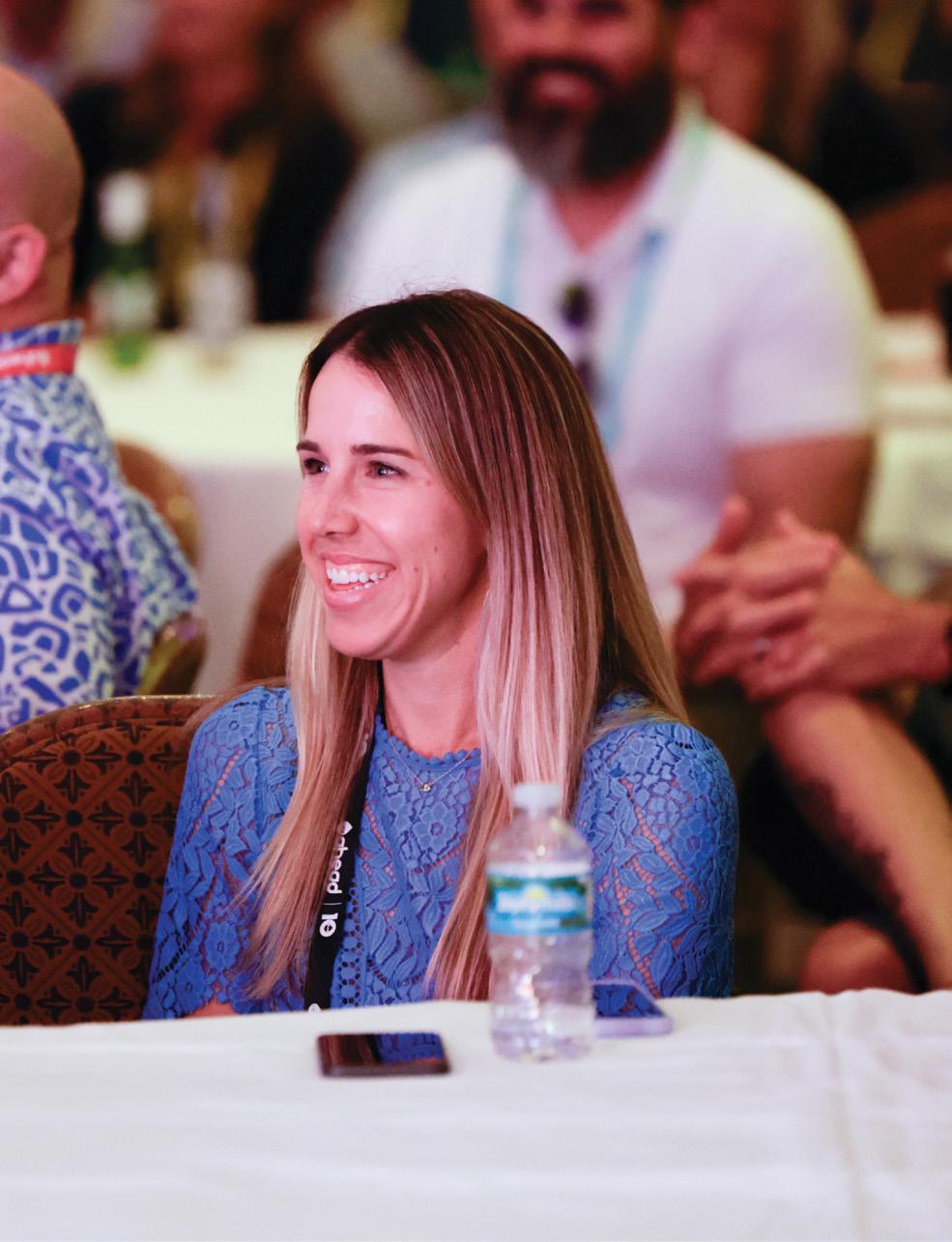
WhatTheyThink sat down with Francis McMahon, Executive Vice President, and Nicole Tully, Manager, Marketing Communications & Sales Enablement, Production Print Solutions of Canon for a wide-reaching conversation that touched on a Canon business update, how better targeted marketing campaigns can help save print, and education initiatives the company has been involved in to help attract the next generation to the printing industry.
WhatTheyThink: Let’s start with a quick update on the state of the industry. How have Canon and Canon’s customers been doing throughout 2024?
Francis McMahon: Overall print shipments did come down a little bit over the summer, and when you look at the total number of placements this year, it’s down from a year ago, but there’s still a lot of equipment being placed out there. The good news, at least for Canon, is that inkjet print volumes are up. Year over year, the number of inkjet pages our customers are producing are increasing. So although less equipment may be going out, the amount of volume that’s going through these machines is increasing. At the same time, we’re putting a lot more ColorStreams into the market, which I’m really happy about because it says the transaction and direct mail markets are doing a little better. And interest rates came down [in September], so that should help placements moving forward.
as their costs continue to escalate, they’re trying to charge more for print, which is then influencing these CFOs to go more digital. So as an industry, we have to protect our print service providers and make sure that they can generate a decent profit to keep print going. You look at rising postal rates and other inflationary conditions, and then you look at the pressure I and others are under to generate a profit for our own companies. You push all that onto the print service provider and what do they do? They’re getting squeezed.
WTT: You mentioned that volumes are up. How do you see the overall demand for print?
FM: One of the things that keeps me up at night is corporate CFOs that frown on using print for marketing or other applications due to the cost. They don’t understand the value, they don’t understand marketing, they just see a line item cost. And everybody turns on their computers in the morning and there’s something from Chase or American Express saying, “Opt out of your printed invoice or statement.” They all want to do everything electronically. As an industry, we really need to get our heads around helping our current print providers with this. And it can’t just be Canon, it has to be our collective industry out there as well, providing a level of inspiration for print to ad agencies, marketing companies, and the CFOs that are making these decisions.
Part two of that is we as vendors have to watch the way we’re pricing, because the reason a lot of this is happening is that the cost of print continues to go up in order for our customers to make a profit. And
WTT: That’s something we have been fighting since the dawn of the Internet, proving the value and effectiveness of print. We’ve collected all this data on the effectiveness of print campaigns, how they have higher response rates, especially with personalization. Our data partner, Keypoint Intelligence, for example, continues to regularly conduct studies that show that print is far more effective than an email. But often it seems like we’re all just talking among ourselves. Somehow we have to get that word out to the people who actually make the decisions about where they’re spending their marketing money.
Nicole Tully: I think one of the things that could factor in here positively for print in the future is if print service providers and marketing services providers started using AI technology and incorporate that into smarter lists and more targeted campaigns. I was talking with a company called Boost.ai, they were one of the sponsors at thINK, and their audience is marketing services providers because they want them to be the experts in educating brands on how they can use print with better, more effective targeting. Yes, you’re going to spend a little bit less on the actual printing and spend a little bit less on your mailing and your postage costs, but you might pay a little bit more for the use of the AI and the intelligence that goes into selecting your campaign. Ultimately, you should also end up with a better ROI, which helps the print service provider justify their costs. My concern with that is implicit in that idea is you’re going to print
less, at least in terms of direct mail, but you’re going to target better. They think that a printer might be able to justify their costs better in terms of value as opposed to number of pieces. As you said, we’ve had all this research about the effectiveness of print and direct mail vs. email. We know it, but we still haven’t figured out how to leverage it and how to actually make it happen. Many campaigns are still just mailing to everyone in a ZIP code or everyone in a demographic, whereas AI can pull super-targeted, precise lists. It’s better targeting than if I as a marketer say, “I think this is our demographic.”
FM: I think Boost.ai really has the model down, but it’s going to require our customers to become a little bit more savvy and learn how to use it. Some of our customers are there and can do it. DS Graphics, The Mailworks—many of our customers totally get it and they’re doing it, but it’s going to require a lot more print service providers to adapt a little bit and do more than just print. They need to understand how print fits in.
WTT: Getting back to the cost issue, you’re right, Francis, the CFO is always going to look at it like, it would only cost 5 cents to print this, but it costs 25 cents to mail this. Our major problem is we have this distribution issue. But the other part of that is we can’t be selling print in a vacuum of “Hey, you’re paying 30 cents for this touchpoint” when you should probably be talking about how when you send out that printed piece, there’s also a digital component of that campaign. So just price it so that it’s one thing. You’re going to pay 50 cents and print is just one component of the whole program cost.
NT: That actually is Boost.ai’s infrastructure to enable a multi-touch and multichannel smart campaign. What they want is the targeted Google remarketing ad for “Nicole Tully.” They want Nicole Tully to get a postcard at Christmas shopping time. And on Black Friday before I get that postcard, they send me the coordinated email. And then two weeks after I get the printed postcard, they send me a followup email, they want my mobile phone to get all the retargeting ads. And all of that is based on AI data that they know they are targeting Nicole Tully who loves to buy toddler girl clothes, here’s her email address, here’s where she lives. But in order for the printing industry to benefit from that, they need to understand email advertising and digital advertising, and they need to invest in tools where they can launch all of those in coordination with the printed product. Or an agency needs to do that for them. And therefore, our customers need to be tight with the agencies who are doing this.
WTT: Which it seems like we’ve talked about for years. And it’s still…how do we do that?
NT: (Laughs.) I think Boost.ai is a tool that can get them there. It doesn’t have to be the only one; I’m sure there are going to be a few that can do the same thing. We’ve talked about omnichannel marketing for forever, but unless you had someone who knew how to do it and run each individual component, print service providers were just doing the print part.
WTT: Let’s shift gears and talk more about education and inspiring the next generation. In June, you received the Champion of Education Award from the Graphic Communications Scholarship Foundation. At the time, you stated that you hoped the award “can serve as a call to action” to help young professionals. Typically, the industry has a tendency to throw money at this issue. But beyond cash that can help fund education and programs, what else should we be doing?
FM: As we continually build upon this and we become more successful, we have to be able to recruit. We have a lot of organizations out there trying to encourage the next generation to enter the industry, but is everybody really doing enough? My promise for next year is I’m going to put a huge effort personally into just getting everybody together and trying to fund the next generation and encourage them to be a part of the industry.
WTT: This year, Canon’s “University Inkjet Program” completed its fifth year. Why is this program important to Canon? How can we get wider industry support—and support from other equipment manufacturers—around a similar program? And how can we get printing companies to participate and support regional and local efforts?
FM: Imagine if in January we could get leaders from the major hardware manufacturers, from large printing companies like Quad and Taylor, and even people from Amazon, and put together a calendar action item that says, “We’re all going to work together and visit high schools and universities.” The Big 10 or the Big 20 are going to take a leading, proactive role in providing encouragement and education, and we’re going to raise enough money where we can donate equipment and we can provide scholarships.
NT: Part of the success was connecting the students with our customers. That is one of the things that has really moved the needle for the students because they don’t know what a career in the printing industry is. It’s not something they see every day. It’s not something that people talk about unless they actually know someone in the printing industry. So for the students, what they envision is being a graphic designer or working in marketing; they’re not really envisioning all of the different careers that are part of the printing industry. What seems to be really transformative for them in this program is when they do get to visit a Canon customer and actually see the print production floor and speak with the people who work there. Similarly, this summer we invited the students who were in the University Inkjet Program class at Clemson University to thINK, so they got to be a full part of the conference and some of our customers set aside an extra hour or two to speak and network with the students and let them pick their brains. And from what I heard from the students, that was the best part because now they could see what the possibilities are.
WTT: Or you look at a shop like Quantum that has access to a variety of machines. You could have the vendors came together and bring in 50 students, give them access to those machines for a week, show them how to operate them, how to design for them, show them what the modern print workflow looks like.
FM: I love that idea.
WTT: Obviously it’s going to need vendor support to do things like that. Canon built the University Inkjet Program, but how do you measure the ROI? How do we define what a “successful” program is, and them how can we sell that to somebody else that might like say, “I can’t sell that to my boss at Landa or Ricoh or HP so I’ll leave it.”
FM: And the University Inkjet Program doesn’t cost a lot of money. It’s more a question of time.
NAT: It’s a cost-effective program because the universities know that they also need to adapt, so they’re willing to fund the topic and add the classes and other components. But they also need the education from our team. Canon employees will be guest lecturers and offer remote demos from our Customer Innovation Center. Canon also sponsors the class projected, which is designing a print sample to be printing on inkjet technology. Canon employees will assist in judging the applications and helping them get printed, allowing the students to bring their designs to life.
Scan for more information about Canon’s University Inkjet Program

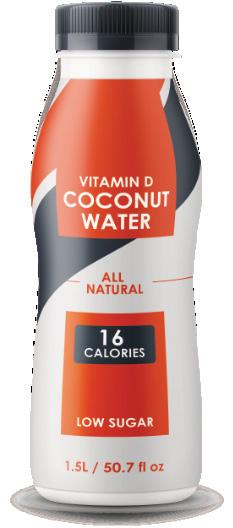
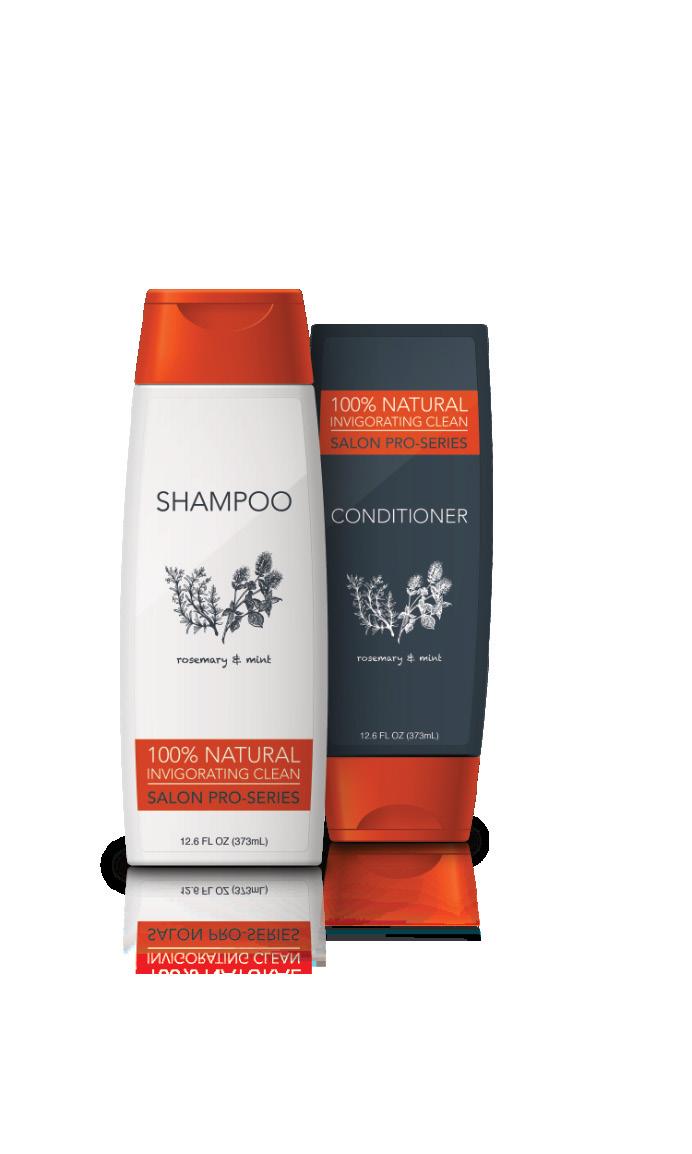












BY RICHARD ROMANO

WLori Gobris Global Marketing Director, Michelman
e sat down with Lori Gobris, Michelman’s Global Marketing Director, Packaging, to talk about the company’s diverse product portfolio, commitment to sustainability, and a growing need for collaboration across the circular economy supply chain.
WhatTheyThink: Most of our readers probably know who Michelman is, but start with a little bit of your history.
Lori Gobris: Michelman’s environmentally friendly, water-based coatings and additives are used extensively in many industries, including digital printing, packaging, composites, seed coatings, and architectural coatings. Our purpose
is Innovating a Sustainable Future, and our water-based solutions enable our customers to achieve their sustainability objectives. We have deep experience in the digital printing, flexible packaging, and rigid packaging value chains.
This year we are celebrating our 75th Anniversary. As a third-generation family-owned business, we are very proud of our longevity. Through the years, we have grown significantly. We have R&D and manufacturing facilities in the United States, Europe, and Asia, as well as an extensive global distribution network. The size of our organization allows us to remain agile compared to some of our larger competitors, and, with our global presence, we can service our customers where they are located.
At Michelman, we actively benchmark ourselves against industry standards. Because of our ongoing commitment to continuous improvement in the areas of Environment, Labor & Human Rights, Sustainable Procurement, and Ethics, we have earned a Gold rating from EcoVadis, ranking in the 97th percentile of over 130,000 companies they assessed.

WTT: You’re in a wide variety of industries— how do you apply your expertise across so many different industries?
LG: We introduced the first repulpable, waterbased coating for water resistance on corrugated board in 1963. In the six decades since then, we have become experts at putting many different materials into water to develop coatings that impart various properties to a broad range of substrates. We’ve become adept at transferring that fundamental knowledge across industries and regions, to quickly identify when an innovation in one industry can be applied to another.
potential impact of these advantages is something that must be done on a case-by-case basis.
Overall, as the packaging industry moves to a more circular model, material reductions, and near-term, practical solutions for recyclability and compostability, are huge drivers in the industry.
WTT: Things have changed a little bit since then. How have you seen things change in print and packaging over the years?
LG: Consumers and brands are eager to reduce their environmental footprints. At the same time, governments are imposing heightened regulatory requirements to improve the sustainability of packaging. Combined, these factors are driving transformational change throughout the industry.
Digital printing has certain inherent sustainability advantages which can make it a better fit than analog for packaging production. Digital printing eliminates the material consumption, labor, cleaning, storage, and disposal of printing plates, as well as the ink and substrate waste generated by bringing analog jobs into register. In addition to enabling per-impression customization and inventory control, the speed and versatility of digital printing technology means it can often make sense to switch from less frequent, longer runs—with their associated storage costs and potential waste from obsolescence—to more frequent, shorter runs. Of course, assessing the
WTT: That’s the circularity issue which has become a big topic in sustainability.
LG: Absolutely. It’s about making sure you don’t just have an end-of-life, but the best end-of-life solution for each application. What we see across a breadth of markets is that optimal solutions vary by end use. Compostable packaging for food provides a good example. Because food is organic, food residue left on a package can enhance the composting process. This illustrates how having a thorough understanding of a package’s end use can inform package design—from raw material selection to planned certifications of the final structure. As we evaluate options to meet the end-of-life requirements for an application, it’s essential to take a holistic approach.
And, because there are regional differences in recycling and composting capabilities, as well as variability in government regulations around sustainability, the industry is working to improve circularity in the ways that are most effective for each region and the packaging used there.
WTT: Obviously the market has changed over the years and technology obviously has changed. How has Michelman itself changed over the past 60 years or so years?
LG: We are constantly evaluating what is happening in the industry and proactively planning for anticipated legislative and market changes.
We feel our strengths fit very well with the future of printing and packaging, but we recognize the need to remain agile. Working with partners, we can innovate quickly, concurrently meeting existing needs while planning for future needs. For example, our 20-year history with HP Indigo has allowed us to develop a deep understanding of how ink, primer, and substrate interact and behave throughout the printing and finishing processes.
As newer equipment has made it possible for substrates to be digitally printed and immediately formed into packages in a single production line, we see expanding opportunities to move the circular economy forward. Our close collaboration with HP has enabled us to work with familiar products in new ways. The increasing overlap between digital printing and flexible packaging applications allows us to leverage our strengths in both areas to develop fresh approaches to our customers’ evolving needs, helping them expand into new applications.
As our reputation as a trusted partner continues to grow, we are actively pursuing opportunities to collaborate across the value chain. We find that working hand-in-hand with value chain partners accelerates the pace of innovation.
When we look at the design changes needed in packaging, we recognize the value in expanding development work beyond our own labs. One example is our ongoing collaboration with UPM Specialty Papers, which has yielded several cocreated solutions. In our work with UPM, we’ve built upon our experience developing water-based coatings for paper to create new structures that are on the cutting edge of circular packaging. These solutions will allow brand owners to replace multimaterial, non-recyclable packaging with paperbased alternatives that meet their requirements for food contact, shelf life, and recyclability.
WTT: Why are partnerships like this so important?
LG: Everyone in the value chain has a role to play in increasing the circularity of packaging. Designing more sustainable alternatives in close collaboration with other industry leaders allows us to compress development timelines, transitioning more quickly from bench development in a lab to customer trials, and iterating more rapidly in those trials, increasing the probability of commercial success.
We’re seeing a tremendous interest in collaboration from every part of the value chain. We routinely engage with raw material suppliers, substrate producers, equipment makers, and academia. Everyone is working at this from their own angle. But what we have found is that when we collaborate more closely, including from the earliest stages of development, we get to the end goal much quicker, and with a higher success rate. These collaborations allow the partners to quickly understand how changes they make impact the rest of the system, and how the components are affected by the processes used to create the final structure. Partnerships allow you to accelerate the pace of innovation, and that’s critical. When we look at upcoming legislation, and the growing expectations from consumers and brands, we know we need to find these solutions quickly.
WTT: What should partners expect when they come to you seeking help for example with sustainability goals?
LG: We understand sustainability is a journey, and that everyone’s journey is unique. At the onset of new partnerships, we help our partners to define, as precisely as possible, the performance requirements of their application. In some
instances, partners have a general idea of their ultimate goal, but don’t really know how to get there. In those situations, we do our best to facilitate narrowing down product needs. We try to work with like-minded partners whose goals align with our expertise.
We understand that each partner is at a different stage of their journey, and try to meet them where they are. As our expertise extends into how coatings can be applied, determining optimum coat weights, and how coatings interact with equipment and downstream processes, we can support our partners beyond product selection, consulting with them through the different phases of the development process, and, when necessary, exploring the creation of new coating solutions for their specific needs.
WTT: That leads to the next question, what’s next for Michelman?
WTT: So I guess you would go that route when existing solutions don’t really fit the bill or work for a particular customer.
LG: Yes, absolutely. One of our first steps when collaborating on a new application is to look for possible solutions within our existing portfolio. Based on our long history of working with these types of coatings, and of providing a range of functionality in different applications, we have found there are often multiple ways to repurpose existing products for new applications.
If no existing products meet the requirements, we then consider new product development. Sometimes minor tweaks to existing products are effective, but when we do need to start from scratch, we remain material-agnostic. We are biased towards what works best for the customer, not necessarily what we have in inventory, or have used previously.
LG: The good news is that we’re finding a lot of great new homes for our current products. Maintaining a fresh perspective on how to use current products allows us to accelerate the pace of innovation while working with partners. Our collaboration with UPM demonstrates the effectiveness of this approach. We’ve partnered closely with them to develop several structures which add heat seal and increased oxygen and moisture barriers to their UPM Asendo™, UPM Asendo™ Pro, and UPM Solide™ Lucent papers, while maintaining their recyclability. Now, we’re working to also add print receptivity for HP Indigo ElectroInk with the inclusion of our DigiPrime® technology. The end result will be a completely new structure built from existing products that have never previously been combined in a single system, and offering a unique set of benefits never previously available in a single system.
In terms of what’s next, we’re going to continue these types of collaborations and continue to see what new solutions we can co-create. Relying solely on products that have performed well historically is not sufficient to meet the new challenges in the digital printing and packaging industries. With the support of our in-house regulatory experts, we are closely monitoring the regulatory landscape to anticipate evolving legal requirements and proactively prepare for them. This includes working towards introducing additional bio-based materials into the solutions we offer to meet upcoming sustainability requirements that current chemistries may not fully support.
We greatly appreciate the dedication of our current partners, and look forward to exploring new collaborations with like-minded organizations across the packaging value chain to support a more circular economy.





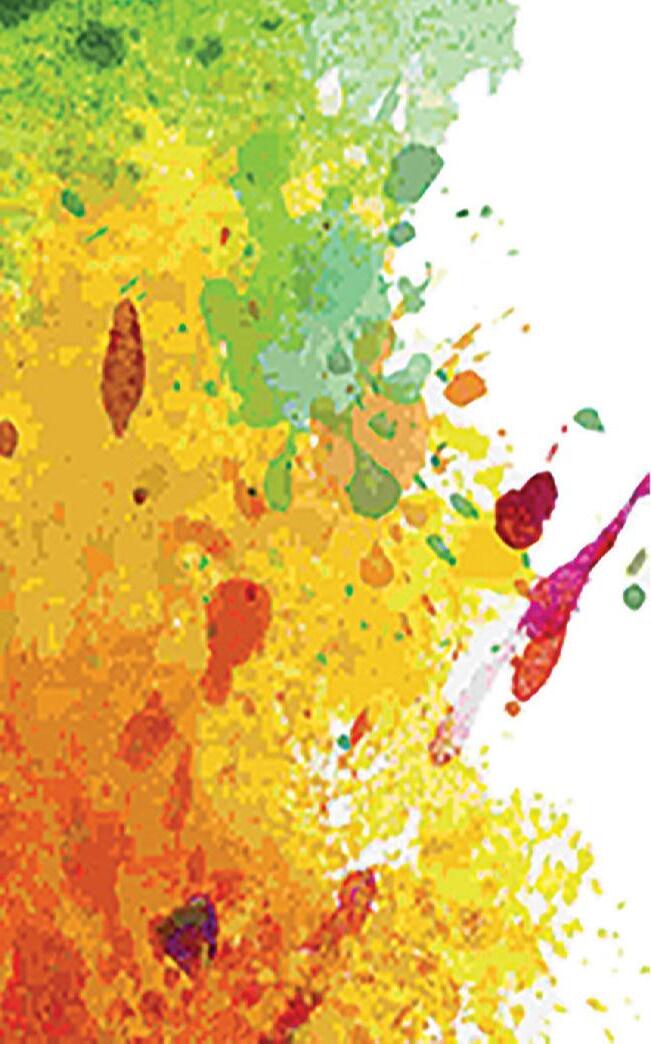


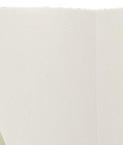

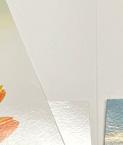
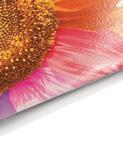
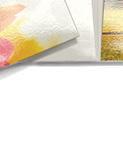




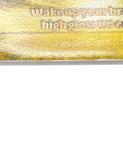



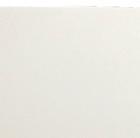












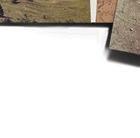








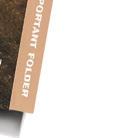












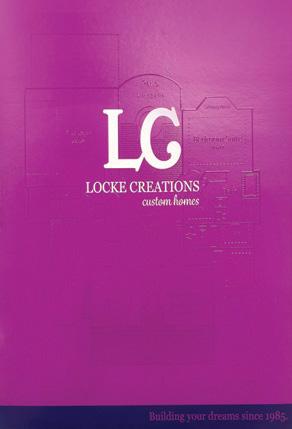


BY JOANNE GORE
In today's competitive market, packaging has evolved from a mere container to a powerful marketing tool. It's no longer just about protecting the product; it's about telling a story and creating an emotional connection with the consumer.
From digital innovations to eco-friendly solutions, several key trends are reshaping how businesses approach their packaging strategies. The rise of social media, particularly platforms like Instagram and TikTok, has led to the emergence of "Instagrammable" packaging. Brands are now designing packaging with social sharing in mind, incorporating elements that encourage user-generated content. This trend not only increases brand visibility but also turns customers into brand advocates.
As we navigate through 2024 and into 2025, the label and packaging industry is evolving at a rapid pace—driven by technological advancements, changing consumer preferences, and global sustainability initiatives.
Digital printing has become a mainstream solution in the label and packaging industry, offering flexibility, efficiency, and customization. Key advantages include:
• Customization and short-run capabilities for tailored packaging
• Faster turnaround times for quick market responses
• Sustainability advantages through reduced waste
• Variable data printing for personalization at scale
UV Inkjet or Dry Toner? UV inkjet offers highspeed, durable printing ideal for large volumes, but can have higher environmental impacts due to the curing process. Dry toner is more cost-effective for short runs; it’s also eco-friendly, non-toxic, and provides excellent customization options, making it perfect for high-quality, food-safe, and sustainable packaging solutions. Both technologies offer distinct advantages, and the choice between them depends on specific production needs, environmental considerations, and the level of customization required.
Xeikon, a leader in digital press manufacturing, offers both technologies. By focusing on customer-centric innovation and sustainability, they’re pushing the boundaries of digital printing, enabling brands to create packaging that caters to the growing demand for personalized experiences—while meeting both regulatory requirements and consumer demands for eco-friendly, visually appealing products—on surfaces that are too thick, too round, or even too smooth for a regular printing press.
Their TITON technology represents a breakthrough in toner formulation that merges the durability of UV ink with the sustainability of dry toner, for eco-friendly printing and packaging on paper-based substrates. This press combines high-quality printing with impressive speeds, allowing for the production of up to 30 meters per minute at 1200 dpi resolution.
Xeikon’s collaboration with KURZ has resulted in the first food-safe digital metallization solution on the market. It’s ideal for printers serving high-end markets like wine & spirits. With no restrictions on run lengths or designs, it provides a sustainable, ultraflexible, cost-efficient way to create high shelf appeal. Plus, variable foiling can be used for personalized consumer labels, variable security elements, or paper-based packaging with metallization.
As we look to the future of digital label and packaging technology, nanographic printing is emerging as a potential game-changer. Pioneered by Landa Digital Printing, it promises to combine the versatility of digital printing with the speed and cost-effectiveness of offset printing. While still in its early stages, nanographic printing could revolutionize the industry by enabling high-speed, high-quality digital printing on a wide range of substrates.
The continued growth of eCommerce has revolutionized the packaging industry, driving demand for solutions that not only protect products during shipping, but also enhance the unboxing experience.
CloudLab is at the cutting edge of this trend, with their web-to-print and web-to-pack software. Their technology allows for seamless integration between online ordering systems and packaging production, enabling businesses to offer customized packaging at scale.
Leveraging artificial intelligence to streamline the packaging design process, CloudLab analyzes product specifications, shipping requirements, and brand guidelines to automatically generate packaging designs that are both functional and visually appealing. This helps reduce design time and ensure consistency across a brand's packaging portfolio.
In the eCommerce space, we're seeing:
• Increased automation: Meeting high-volume demands without compromising quality or customization is paramount to brands. Automated packaging lines can now adjust in real time to different product sizes and packaging designs, enabling efficient production of bespoke eCommerce orders.
• More tracking: For better tracking and customer engagement, more brands are turning to smart packaging solutions like QR codes and NFC tags.
• Sustainable alternatives: Brands are increasingly opting for recyclable, biodegradable, or reusable packaging materials to appeal to environmentally conscious consumers. For instance, some fashion retailers are now using packaging that doubles as a return shipping container, reducing waste and simplifying the return process for customers.
• Interactive print: By using smartphone apps, customers can scan their package to unlock interactive content, product information, or even virtual try-on experiences. Augmented reality (AR) experiences not only enhance customer engagement, but also provides valuable data for brands on how customers interact with their products.
In 2024, packaging embellishments have become more than just decorative elements; they’ve become strategic tools for brand differentiation and consumer engagement. Key trends in embellishments include:
• Growing Popularity: Techniques like foiling, embossing, and special coatings create tactile and visual interest—making packaging stand out on the shelf. Brands are increasingly using techniques to create multi-sensory experiences that enhance consumer appeal.
• Impact on Perception: Embellished packaging is often perceived as higher quality. Studies have shown that consumers are willing to pay up to 25% more for products with premium packaging embellishments, making it a valuable investment for brands.
• Technological Advancements: Innovations in digital embellishment technologies are making sophisticated designs more accessible and costeffective. This democratization of luxury print allows even small brands to leverage high-end packaging solutions.
• Sustainability: The rise of sustainable embellishments is notable. Bio-based and recyclable foils, along with compostable coatings, allow brands to maintain premium aesthetics while meeting eco-friendly goals.
• Universal print: Using the power of touch and embellished print to help identify products, solutions like the CyR.U.S. System (https:// cyrussystem.com/meetcyrus) of raised universal symbols makes packaging more accessible for visually impaired consumers and enhances product identification and safety.
Award-winning Taktiful (http://www.taktiful. com/) is at the forefront of revolutionizing digital print embellishments. Their AI-powered tools and comprehensive training programs empower print service providers to maximize the profitability and impact of their embellished prints. Their AI-powered tool, Taktify, transforms traditional cost-plus pricing models into dynamic, market-bearable pricing strategies. This shift optimizes profit margins and aligns with customer value perception, as demonstrated in their case study with The Kennickell Group (https://www.kennickell.com/).
The company offers an eight-week training program that revitalizes sales teams and maximizes the use of digital embellishment equipment. Their training has helped companies like Fuse Graphics (http://www.fusegraphics.com/) turn underutilized equipment into thriving assets, boosting creativity and redefining brand narratives. Taktiful’s software solutions, including tools for estimating, pricing, and design automation, streamline the process of creating and selling embellished print. These tools help print service providers visualize and proof their designs, ensuring high-quality outcomes and customer satisfaction.
While digital printing has gained significant ground, offset printing remains a crucial technology for largescale production runs. Its ability to deliver highquality prints consistently makes it irreplaceable for certain applications.
By addressing multiple aspects of print production, The Grey Elephant (https://www.the-greyelephant.com/) offers a holistic approach to increasing efficiency and profitability for flexo label and packaging printers. They are reinventing offset for the modern era, with an approach that combines traditional offset techniques with modern workflow optimizations to memorize and automate printing tools—reducing labor and material costs. The software’s intelligent artwork comparison automatically identifies commonalities between files, minimizing the need for new plates and manual processes. The system optimizes print sequencing based on job complexity and existing plates, significantly reducing press refitting time and unnecessary changeovers.
By seamlessly integrating with Esko Automation Engine, ERP, and Graphics Systems, it ensures realtime information exchange across all production stages. For regulated industries, The Grey Elephant provides automated traceability adhering to GMP guidelines, simplifying compliance and error tracking. This comprehensive solution not only reduces tool and material costs, but also promotes the re-use of printing tools, supporting eco-friendly practices and reducing waste.
The Grey Elephant's automation capabilities streamline production, reduces costs, and increase profitability, ensuring presses runs efficiently without unnecessary interruptions. By leveraging The Grey Elephant's "brain quality" to memorize and automate every detail of your print tools, you can create a more efficient and profitable print production schedule, where your press doesn't sit idle for plate changes or worn-out tools and dies.
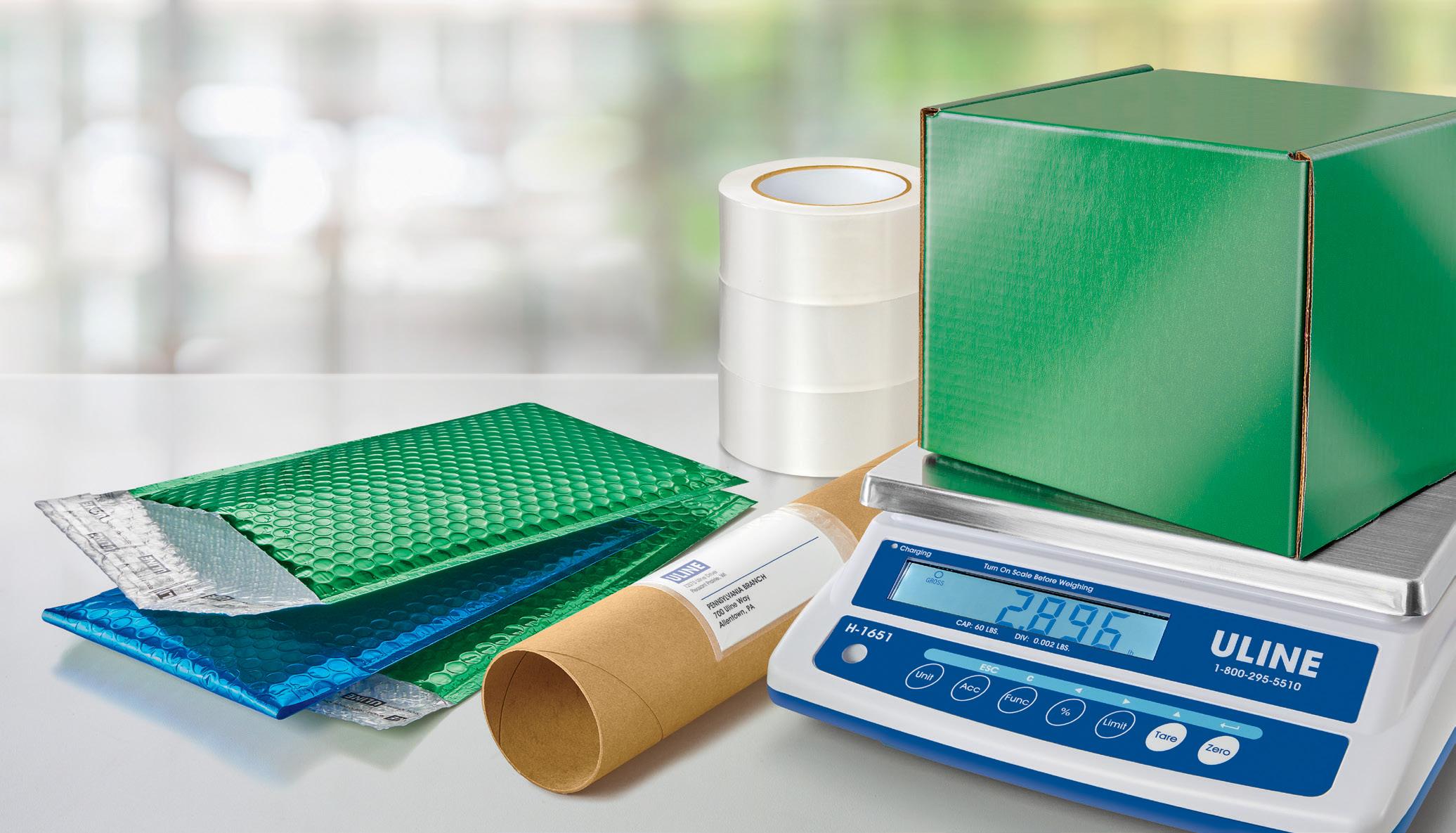

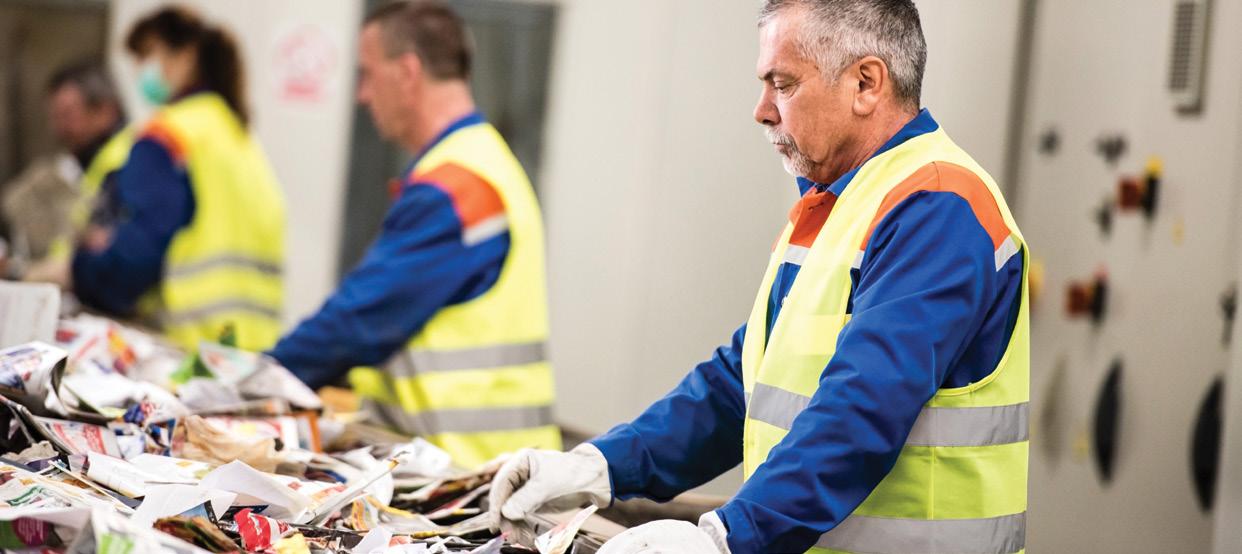
While sustainability has been mentioned throughout this article, it's worth emphasizing its overarching importance in the label and packaging industry of 2024.
Key sustainability trends include:
• Increased use of recycled and recyclable materials, with brands committing to specific recycled content percentages in their packaging. According to Asteria Group (https://asteriagroup.eu/labelsand-packaging-trends-for-2024/), the emphasis on eco-friendly materials and recyclability will continue to dominate the industry.
• De-inking: Advances in de-inking technology are improving the recyclability of printed materials by effectively removing inks from paper fibers, making it easier to produce high-quality recycled paper.
• Adoption of mono-material packaging designs that are easier to recycle.
• Growth of reusable and refillable packaging systems, particularly in the personal care and household products sectors. SupremeX (https:// supremex.com/packaging-trends-for-2024what-lies-ahead-for-the-packaging-industry) highlights the resurgence of reusable packaging as a significant trend for 2024.
• Development of compostable packaging materials for short-life products.
• Implementation of blockchain technology for supply chain transparency, allowing consumers to trace the origin and environmental impact of packaging materials.
Bottle Coatings (http://www.bottlecoatings. com/), a leader in innovative coating solutions, is making significant strides in sustainability within the packaging industry. The company specializes in powder coatings that offer both functional and environmental benefits. Their antimicrobial-treated powder coatings not only enhance product safety but also contribute to sustainability by extending the life of packaging and reducing the need for frequent
replacements. Bottle Coatings' commitment to ecofriendly practices is evident in their use of UV-cured coatings, which require less energy and produce fewer emissions compared to traditional coating methods. By focusing on durable, long-lasting coatings that don't compromise on performance, Bottle Coatings is helping brands reduce their environmental footprint while maintaining highquality packaging standards.
The label and packaging industry is brimming with opportunities, but success hinges on a deep understanding of your market and the value you bring to it. The key to success in this evolving landscape lies in embracing these trends while maintaining a focus on quality, sustainability, and consumer engagement. By leveraging packaging as a strategic marketing asset and staying attuned to technological advancements, businesses can ensure they remain competitive in this dynamic industry.
Whether you’re jumping headfirst into the label and packaging space—or expanding your product and services menu, it's crucial to understand where the revenue will be coming from, how long it will take before you see a return on your investment, and the marketing and sales strategies that you’ll use to make it happen. Knowing who you help, how you help, and why it matters ensures that your packaging strategies are aligned with your brand's goals and the needs of your target audience.
The most successful brands are those that view their packaging as an investment in customer experience and brand equity. In the coming years, we expect to see even more exciting innovations that will continue to transform the way we think—and feel—about labels and packaging.
President of Joanne Gore Communications and passionate about print, Joanne is a marketing powerhouse with over 25 years of experience in building global B2B marketing strategies for print, software, hardware, and manufacturing companies—and the brands they serve. Her mission: Help the print industry sell more print.
Contact Joanne: joanne@joannegorecommunications.com


BY PATRICK HENRY
As every printer knows, a skid of still-wet sheets on the pressroom floor is a pile of paper that can’t turn into a stack of profit until the job is dry enough to be trimmed, folded, finished, and shipped to the customer. That can take time¬—and time when nothing other than drying is happening is the opposite of productive in a busy offset plant.
Hence the appeal of instant drying by curing specially formulated inks and coatings with ultraviolet (UV) radiation. There are two ways to do it: with traditional mercury-vapor UV lamps, and with exposure units that use light emitting diodes (LEDs) as the radiation source.
There are also two ways for offset printers to add the capability: by buying a new press fully equipped for UV at the factory or by retrofitting an existing press with either a traditional UV or an LED UV system. This report examines the retrofitting option, starting with an overview of what vendors of UV technologies are hearing from their customers as they ponder stepping into the invisible spotlight of ultraviolet curing.
Errol Moebius, President/CEO, IST America Corporation, believes customers should begin by defining how they intend to apply UV curing now and in the future. This includes working with their consumables suppliers and their designers to determine what will and will not work.
For example, says Moebius, “does it work with that substrate? Is UV really necessary on that product? How suitable is UV for food migration? They have to understand what their applications are. They have to be clear on the differences between traditional UV and LED UV. We all need a little bit more education.”

According to Moebius, what most customers typically want to know about LED UV is how much money and energy it will save them compared with the older, lamp-based process. The operating life of an LED UV system¬—up to 10 times that of a 2,500-hour traditional UV unit¬—is another point of comparison in its favor. ROI, safety, and manufacturer support also loom large in customers’ thinking.
Moebius say that owing to health and safety regulations governing the uses of traditional UV, the process “has significantly improved over the years. It’s not the bad ogre it used to be” in terms of reputation. “People have obviously got more comfortable with it.”
“Conventional UV is a very mature approach and arguably, so is LED,” observes Gary Doman, International Sales Manager, Sheetfed, GEW. He sees two trends of adoption running in parallel.
He says that one is a migration from traditional UV to LED UV among packaging producers. The other, occurring in the commercial market, is a growing uptake of LED UV by printers with no previous use of traditional curing.
The main reason for the shift to LED UV in packaging is the savings in energy, according to Doman. “If you go from a traditional UV system to an all LED UV system, your energy savings are going to be about 70%,” he says. “So if you’re spending $100,000 a month on electricity, you’re going to cut that to $30,000.” These are actual savings that GEW has documented by measuring the electrical consumption of its LED UV systems over time, Doman adds.

As Doman sees it, adoption in the commercial market is being driven in part by printers’ desire to make their offset presses more efficient for the kinds of small-format, short-run work they have largely shifted to their digital equipment. The key to achieving this, he explains, lies in the instant drying that LED UV makes possible.
He says that when customers ask themselves how they can match the throughput speed of digital printing, they find the answer is that sheets cured on a conventional offset press can go straight to the postpress department for finishing and delivery. This often leads them to conclude that it’s cheaper overall to put small runs on the offset press as long as that press is equipped for LED UV.
Another driver of adoption among commercial printers is their movement into packaging, with some plants transitioning completely. These printers, says Doman, “have really cut their teeth on LED UV, because it is a really simple and cost effective way to get UV.”
Stacy Hoge, Phoseon Marketing Manager, Excelitas Technologies, says that because offset printing presses have used mercury arc UV curing for many years, there are fewer gaps in printers’ knowledge about it than is the case with UV LED, a newer technology.
One of the knowledge gaps for LED UV has to do with its capability. As Hoge explains, “Users commonly think that UV LED systems are not powerful enough to support offset applications, but these systems now have the high intensity needed to deliver the required production speeds for both sheetfed and web offset printing.”
She says that other questions on prospective adopters’ minds include deciding whether to retrofit an existing press with UV or to buy a UV-equipped new one; determining total investment cost and ROI; and understanding the sustainability benefits of integrating UV.
Like others serving the UV printing market, these vendors offer both traditional lamp-based and LED UV curing solutions. LED UV is a newer and in some ways a more advanced technology than traditional UV, but it isn’t being positioned as a replacement for the older process. The vendors agree that in some offset printing applications, traditional UV remains the preferred approach as LED UV finds opportunities of its own.
Moebius notes that while much progress has been made in LED UV, the technology has limitations that aren’t always recognized. He says these factors could make it less desirable than traditional UV for jobs requiring complex ink sequences, heavy coverage, robust scuff and scratch resistance, and special effects.
He explains that because the traditional process cures with stronger ink adhesion in a wider range of the UV spectrum than LED UV, it’s suitable for a correspondingly wider mix of substrates. These include non-paper materials such as foil board, synthetics, and plastics, often employed in high-end packaging for cosmetics and liquor.
Doman says that for packaging and other types of work with more than four colors plus coating and varnishing, it’s possible to hybridize the curing with interdeck LED UV units and traditional UV lamps in the extended delivery after the coater, sometimes next to an IR system for drying conventional coatings.
That way, he explains, the varnishing step can be done with traditional UV fluids that are less expensive and available in more varieties than their LED counterparts.
Doman also notes a lingering but now outmoded perception that LED UV varnishes tend to yellow after they’re applied. He says this would be an issue only in very specific types of packaging¬—for instance, pharmaceutical boxes in which the white board “has got to be perfectly white.”
Hoge sees traditional UV as the preferred option for low-cost, short-lifecycle commercial printed matter that can be sent directly to postpress as fully dried sheets.
Moebius says that demand for LED UV is strongest in four-color commercial work on paper substrates with limited use of matched colors. He notes that in this type of production, post-cure adhesion is supported by the absorption of ink into the substrate. Demand also is picking up in narrow-web work on non-paper substrates without heavy ink coverage and overloading of color by trapping.
LED UV is a must for printing on plastics that could be distorted by the heat of exposure to traditional UV, according to Doman. “LED UV runs much, much cooler” than the lamp-based process. “For commercial printers who want to print plastic, there really is only one way, and that's LED UV, the ability to cure those special inks through the machine,” he says.
As for adhesion, Doman agrees that there are certain applications on specific materials where traditional UV will be preferable. But in others, LED UV has the edge: for example, when printing white on clear plastic.
He explains that because the titanium dioxide pigment in white ink reflects UV radiation, curing with the traditional process would require installing a special lamp to raise the peak wavelength of the UV output. Operating naturally at the high end of the exposure range, LED UV has a distinct advantage for this type of work.
According to Hoge, demand for LED UV curing is growing fastest in web-to-print commercial printing applications and in labels and packaging. This is especially true for heat sensitive or special materials such PET (polyethylene terephthalate) and PP (polypropylene), as well as foil.
Moebius says that because LED UV units cure without the heat of traditional lamps, they’re appropriate for synthetics and other heat-sensitive substrates. Eliminating the buildup of heat also reduces general wear and tear on the equipment.
Unlike lamps, emitters inside LED UV units can be switched on and off selectively to support different curing formats. The long life expectancy of LED UV units represents a significant cost savings for commercial offset printers, Moebius adds.
Doman points out that because LED UV units don’t require the cooling and ozone extraction of traditional UV, they are much simpler to install. By doing away with the need for offset spray powder, they also eliminate the risk of spray powder contamination and the cleanup chores that come with it.
What sometimes isn’t fully appreciated, according to Doman, is the role that LED UV plays in reducing the frequency of reprints.
Too often, he says, a job that has been printed and finished with care will be rejected by the customer because of incomplete drying, the appearance of scuff marks, or traces of spray powder in the print. Printers who have spent hundreds of thousands of dollars on reprints can make that unwanted expense disappear by switching to instant-drying, damageresistant LED UV curing, Doman advises.
Hoge says that among the list of attractions for LED UV curing are printing with sharper dots and more vibrant colors for a higher quality finished product; solvent-free inks and coatings without the environmental impact of solvent-based consumables; the ability to print on nearly all types of substrates, including non-absorbent materials such as plastics; and eliminating concerns about mercury, which LED UV emitters do not use.
A question that usually occurs to prospective adopters is whether a legacy press retrofitted for UV will be as efficient in terms of curing as a new press with the UV technology built in. According to Moebius, there’s no meaningful difference in performance between a retrofitted UV unit and a system built into the press from day one.
“The legacy machine would get a new system on it, and the system would output the UV rays at the same amount” as a comparable unit running organically on a newer press, he says.
Any difference would lie in the integration capabilities and the overall productivity of the legacy machine to which UV is added, Moebius explains. Its running speed, the consumables and solvents that it uses, as well as its heat, air, and exhaust management systems all play into how productive the legacy press would be compared with a newer one.
But from a UV curing standpoint, “absolutely they should be the same,” Moebius says.
“Many of our systems go onto quite old machines” with good results, says Doman, noting that a customer who invests in a UV retrofit instead of a whole new UV press “gets a machine that does everything a brand new press can do” in terms of curing.
Doman acknowledges that while the speed of output might not be as high, “the benefits are the same. There’s no difference. If I put UV on a 10-yearold machine and I want to diversify my products, it will just get more efficient.”
If a press is retrofitted correctly and the UV curing process has been successfully defined, the legacy
press should operate as efficiently as a new press,” Hoge states. “However, newer presses may offer faster press speeds and other advanced features than the older press for higher productivity.”
Moebius says that adding UV to an existing press would involve changing to UV-compatible consumables and replacing some of the machine components they come into contact with¬—for example, rubber offset blankets and the diaphragms inside the washup trays. If the installation is traditional UV, safety modifications on catwalks and side frames would be in order.
Retrofitting a press with traditional UV can be “a little more complicated” than adding LED UV because of the heat management considerations of the lampbased process, Moebius notes. With low-heat LED UV, “you have a cassette that as long as it’s the right height, you bolt it in place and move on.” A mercurybulb UV system, on the other hand, needs not only correct placement, but also airflow, water cooling, and shielding to make it safe to operate.
Doman says that because new presses are built to be UV-ready, retrofitting them with traditional UV or LED UV systems is relatively easy. For customers with older equipment, GEW starts the process by taking 3D measurements of the press for designing the lamps, shielding, fittings, and other components that will be needed for integration.
Then, at the customer’s site, “it’s really a case of just bolting the lamp into the machine, hooking up the power supply, and off they run.” For most customers, “within two and a half days, they’ll be back in production.”
Doman adds that GEW recently installed UV on a “beautiful” manroland 800 sheetfed press that has been in service for 50 years. “The integration was no problem at all. I would say that if you could do that machine, you could do anything,” he observes.
Hoge reminds prospective adopters that adding UV to a press means paying attention to more than just the UV components.
“Retrofitting requires working closely with the printer OEM, ink company, and UV supplier,” she advises. “The initial challenge with UV is getting the inks and chemicals right. The inks and coatings need to cure at the correct wavelength for the technology. Regardless of whether traditional UV or LED is used, the ink and coating chemistries are ultraviolet-based and need to be compatible with the light source.”
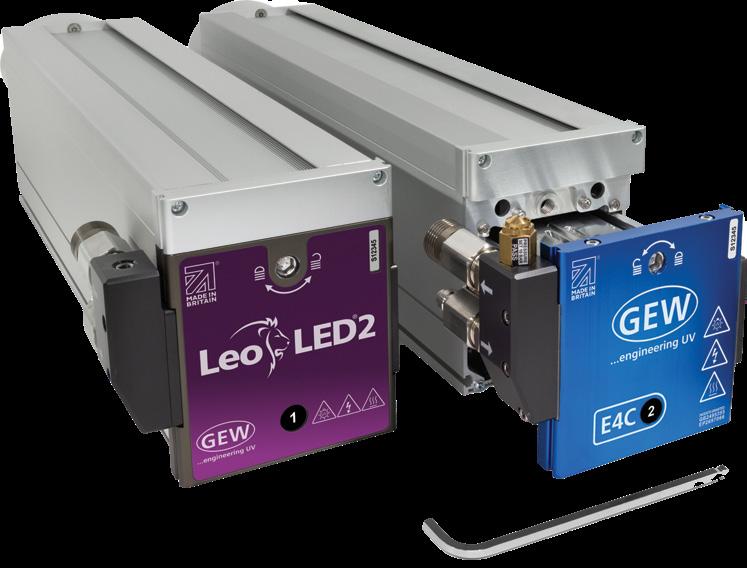
When LED UV curing systems first came to market, an adoption hurdle they had to overcome was the comparatively high price of their consumables. The price spread between LED UV-compatible inks and coatings and traditional UV consumables has closed somewhat in recent years, according to Moebius, who reckons that the difference has dropped from 15% to 20% more expensive for LED UV to about 8% to 10% now.
What principally makes LED UV ink costlier “is the fact that it needs a really pure photoinitiator inside it to be able to cure correctly at the right wavelength,” Moebius says.
Because LED UV’s range of exposure is narrower than that of traditional UV, “the more pure the photoinitiator needs to be, and the more expensive it gets.” He likens the difference to the contrast between highly refined white sugar and the raw brown kind.
“The gap is closing” between the price of LED UV ink and that of traditional UV ink, according to Doman. “For a commercial printer, the decision is a lot easier than it was five years ago. As more printers adopt LED UV, the price gap will maintain that closeness and probably come down a little more.”
“Offset inks are readily available for UV LED and the costs are very similar to traditional UV,” says Hoge. “On the other hand, LED coatings tend to be more expensive than for traditional UV. Looking ahead, we expect the price for UV LED varnishes to drop, making it likely for LED to become the preferred technology for varnishes.”
BY GINA DANNER
(This article kicks off a new feature that will run regularly on WhatTheyThink.com in which Gina Danner, CEO of Kansas City’s NextPage, and other print business owners will look at the issues and concerns that beset them.)

The goal of any print business—like that of any business—is to be profitable and often time that requires growth. We’ve all heard the term “growing pains,” but sometimes the end result of that growth is where the pain points are. Of course small printers have their challenges, but beyond a certain growth point new sets of challenges start to kick in and we’re often not prepared for them as we scale up. Many of them center around leadership.
Most businesses, print or otherwise, are small or midsize businesses; only 0.4% of all businesses generate more than $10 million in revenue. Likewise print service providers, and as a print service provider, when you get to that $10 million mark, you start to have different kinds of problems and challenges that require leadership beyond the owner or president. In a small business, typically all or most decisions fall on the founder, owner, president—or whoever is the acknowledged leader of the business. As businesses scale up past a certain point, that becomes an unwieldy task. Where I spend most of my time—and most of my anxiety—is contending
In a small business, typically all or most decisions fall on the founder, owner, president—or whoever is the acknowledged leader of the business. As businesses scale up past a certain point, that becomes an unwieldy task.

with inexperienced leaders, or the ability for my team to make decisions about things they’ve never done before.
The revenue level is a demarcation point. In a $1 million company, it’s often about how hard you work as the leader of the business and all decisions fall upon that leader. When a company hits about $5 million, there are a number of team members and some management tasks are delegated within the organization. When the business hits about $5 to 8 million, there are some real systems in place and perhaps there are managers overseeing different parts of the business. But where you really
struggle is in that $8 to10 million range. It’s hard to find a true leader—other than the founder—who drives the business and sets the vision. So what ends up happening is that everybody runs to the founder, who makes a decision, and then everybody goes back and executes that decision. As a result, you often hear owners saying, “Nothing happens unless I’m there” or they complain about their team members or their employees. What I’ve seen over the years— and still in some of my peer groups—is that the ability to put in place a more professional staff that has experience, maybe from outside the printing industry, or leadership skills that can help take all the burden of decision-making of the founder.
So how do we—or I—go about getting my staff to make decisions? If you’re the founder of a company started small, the default tendency is go it alone. Make every decision, solve every problem, yourself. But at a certain point, you can’t. So you have to hire good managers and really have to look for people who have the ability to solve problems they’ve never seen before. How do they use strategic or analytical thinking to work through a problem? Can they start to solve a problem in ways that are not traditional but rather “out of the box”? AND, do they understand the ramification of that solution, or the impact it will have over time?
The way that I try to model that with my team is that when they bring a problem to me, I ask them, “How do you think we should solve it?” They’ll come up with an answer and then we’ll brainstorm additional ideas and look at the implications of each potential solution. What could go wrong? What’s the biggest risk or the worst that could happen? The idea is have them dig deeper into the issues. So rather than automatically make a decision as the founder, I try to teach people to think through two or three possible decisions and the potential ramifications of those decisions.
For example, we have a couple really great press operators on the day shift, and while we’ve got really good people on the night shift, their skills aren’t quite as good. So how do we boost their skill level? I put that question to my team and what they came back with was: there’s nothing we can do; that’s just the way it is, and we just have to give them easier jobs. That’s not an acceptable answer! I said, “We’re not leaving this room until we come up with at least three ideas.”

So they started coming up with options—maybe have one of the day shift operators come in early and work with one of the night shift operators, and so on.
When assembling a top-notch management team who can delegate and handle all the different aspects of the business, there needs to be a system of accountability. How do you hold one another accountable for getting things done? I was talking to someone in one of my peer groups and they had a process where they meet daily to go over specific tasks, and then also meet every quarter to set goals for the next quarter. At the end of the quarter, they found they weren’t accomplishing those goals. So I asked, “When you meet daily and itemize your tasks, are those tasks getting done?” They said no. Which explained everything—if daily tasks weren’t getting accomplished, why would they expect 90-day goals to get done?
I think that’s common in our industry because we live in a whirlwind or tornado most of the time—and yet we’ll stop everything we’re doing to go take care of one emergency job for a client. And we all do it! That’s a constant in the printing industry. This isn’t necessarily a bad thing—especially when it comes to client retention—but is it the best way to run a business?
Ultimately, the key is, how do we get into a cadence of getting stuff done? This is where being a large printer can be an advantage. I think back over the years and it wasn’t until NextPage got to a certain size that I could step back a little bit. It had been a constant treadmill of coming in early and staying late. But I started to think about how I manage my work—what do I prioritize and spend my time on and how do I get everybody around me to do the same? Once I was able to get through that, it helped a lot.
When we start to see ourselves as real project managers instead of people who put ink on paper, we can better start to manage everything within our businesses.
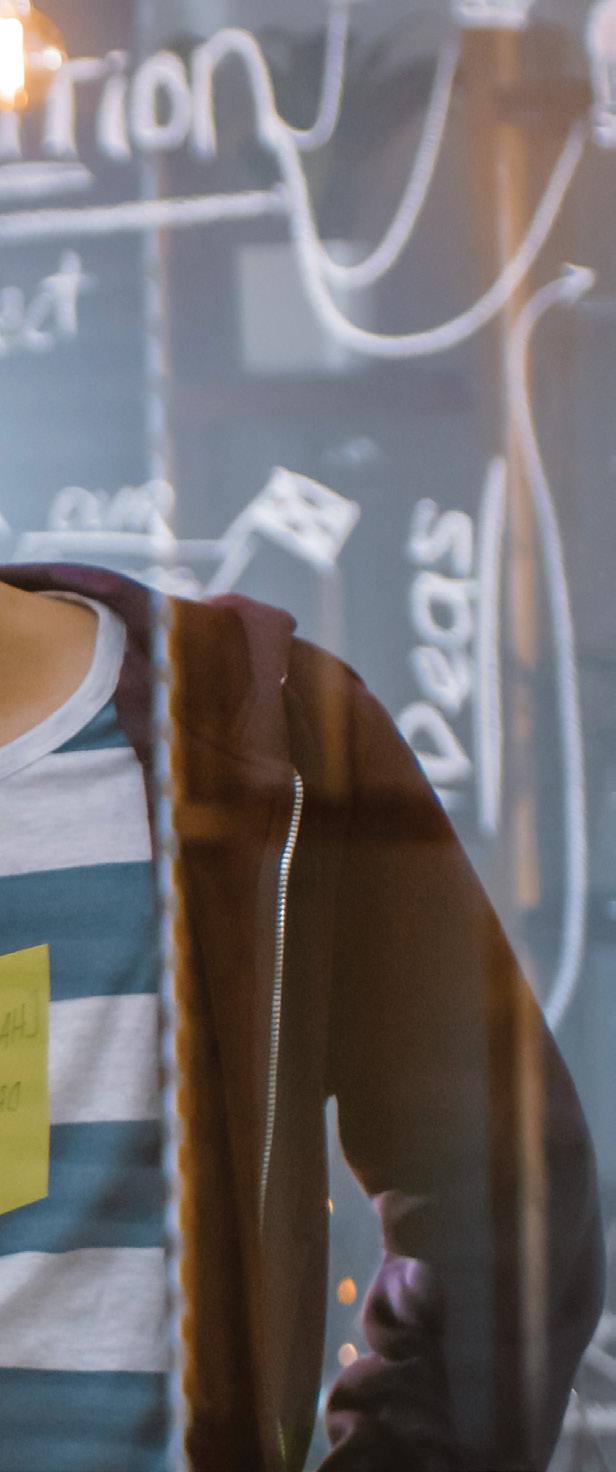
Gina Danner is CEO of NextPage and leads the ongoing growth of the organization. Her experience includes marketing, writing, sales, and entrepreneurship. She desires to fuel growth in her team, clients, friends, business associates, and community. Gina speaks on a variety of topics including strategic relationship development, business-building efforts, entrepreneurship, and personal growth and wellness.





BY DAVID HUNTER
It is a brand owner’s nightmare: two packages for the same product sitting side by side on the store shelf and the colors don’t match.
When packaging from the same brand does not match, it opens a pandoras box of potential questions – the kind no brand wants consumers to ask. If the package looks different, are the contents also different? Is this product out of date? Could it be counterfeit? Inconsistency in product packaging can cause the consumer to lose confidence in the consistency of the actual product. And that’s bad news for any brand.
Today, brands are always looking for faster goto-market strategies and more customization for packaging to reach an ever-changing market. Whether it is for short runs or new variations of package, the demand to use different printing devices for products in the same product line is a requirement today. So, it is critical to know that any new print technology is capable of matching existing print technologies to ensure packaging on the shelves matches, no matter how it was manufactured.
Two key attributes are required to ensure that the consumer doesn’t lose this confidence. First, the brand must establish what a product should look like for a given package. Think of this as the golden master original that all future renditions should match. It is the bullseye for the reference image.

When establishing brand colors, its critical to determine exactly what the master reference color is. Any variation is measured against this.
Second, the brand must establish how much variation they are willing to accept from the bullseye (or how many rings away from bullseye is acceptable.) When developing tolerances for spot/brand colors the industry standard is to use a metric called delta E (also expressed as ∆E) which can be described as a metric that quantifies an incremental change between one color and another. The lower the delta E number, the closer color matches and the higher the number, the more visible the difference in the color.
This is a simple concept, but many companies have not been able to implement this simple scenario. For example, some brands have developed a complicated scorecard system that gives points for each process control metric that is met to a given tolerance. For example, if the 100% Cyan patch on a printed sheet measures within 3∆E of the reference color, the score is 5 points. If it is within 5 ∆E it gets 3 points, and so on. Finally, a print that scores an 85 or greater is supposed to be acceptable. The question is, compared to what?
Professionals who use this type of system experience a couple of major limitations. First, a print can be measured and score higher than that given “acceptable” number, and still not meet the brand's expectations for a color match. Second, a scorecard doesn’t define the color variation between prints. It is quite possible that two prints that have the same score don’t look like one another. So, they not only do not match one another, they also won’t meet customer expectations.
Further, most packaging consists of both process and brand/spot colors, so tolerances need to be defined for both process and brand color. While the industry uses delta E (∆E) tolerances for spot/

This Spot Color Variator example shows 27 variations of 3 delta E (3 ∆E) to the reference yellow color in all directions of color (hue, saturation, lightness.) Notice that some areas show a big difference, and some show a small visual difference, but all are 3 ∆E 2000 in difference. This shows just how much actual variance there can be visually using the same measurement metric.
brand colors, different delta E formulas produce different results. Even the industry-accepted delta E 2000 (∆E2000) formula has inherent limitations because the color space is not linear. This means that with some colors, a delta E variance in different directions will result in inconsistent, and perceptible differences, in color.
This image demonstrates what we’re talking about [see image above.]
Brand colors are typically assigned to logos, line art or text, and it is appropriate to set a tolerance on delta E, but what about the thousands of other colors that might be on a page? When comparing pictures or pages with thousands of colors (think of each dot/pixel in a picture being a different color), the ∆E metric doesn't work.
As most print service providers know, some colors are hard or impossible for CMYK printing devices to match (especially bright or light colors.) It is important to ensure that the color reference can be rendered in the desired CMYK color space. If not, a
higher tolerance needs to be granted to that color to accommodate for the gamut limitation on the output device. Getting clients to understand these technical limitations can sometimes be a challenge.
This is where a different metric for defining tolerances for page appearance comes in, called E-Factor. E-Factor is a system that links human expectations for a color match and a printing device's ability to deliver a color match that will meet or exceed expectations.
The first part of the system is the E-Factor Exercise, based on a type of delta E for communicating visual differences related to two pages compared to one another. It’s used to assess a person’s level of expectation for an acceptable color match. It’s a subjective test, in which the test subject is not assessing whether they can see a difference between the cards – a person should see a difference between each card by design – but to judge how much variation the person is willing to accept to meet their expectations, or their E(Expectation) Factor.

(Golden Master)
E-Factor Tolerance is how much variation a person is willing to accept between the master reference and a printed product. Zero tolerance is an unrealistic expectation given the limitations and variation within the printing process.
The E-Factor Exercise can be performed in person, with a set of eight printed cards (available from the ChromaChecker store chromachecker.com/ store/en/show/18) or through a free online exercise (chromachecker.com/personal_ef/en/start). Users are encouraged to administer both exercises, as it helps train brand managers and other print buyers that there are differences and sometime a great deal of variability between color in print and onscreen.
E-Factor is a metric that defines process color differences between two pages, or two images, which co-relates with delta E for spot colors. Essentially E-Factor is based on the CRF at the 95th percentile delta E (00) stating that 95% of the colors between the two pages are within X delta E (E-Factor) of one another. The result is a simple, one number, qualification of how different two pages are perceived by the human eye. Research shows that 95% of print buyers accept color match with an E-Factor of less than 3, and 95% print buyers rejected color matches with an E-Factor of more than 8.
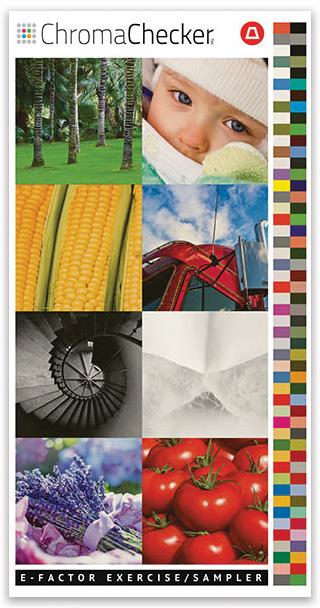




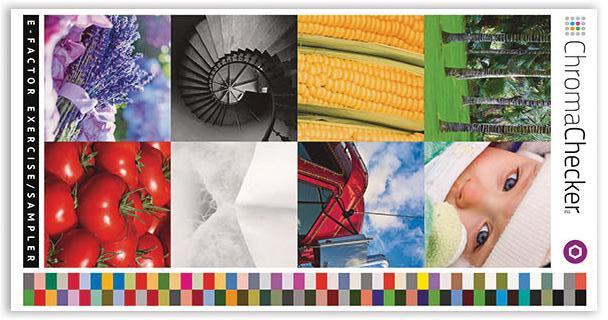

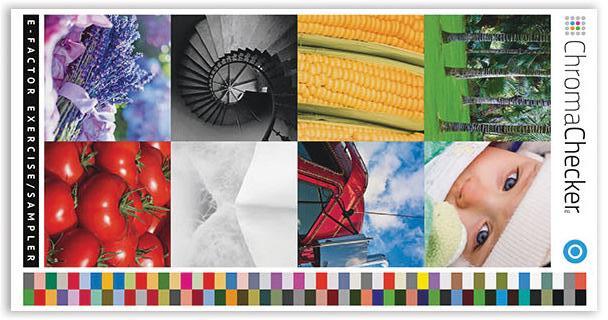
The second part of the system measures the print process to quantify if that process can meet customer expectations. Measuring color bars off printer allows system to define the E-Factor to both the reference (accuracy), but also to itself over time (consistency). The same metric can be used for reproduction systems like printers; therefore, it is possible to quantify how a printing device reproduces the color against the reference. No reproduction system, monitor or printing device is perfect (an E-Factor of 0) so that’s not a realistic expectation.
The range between a 3 and 8 E-Factor is indeed where subjectivity begins to influence print acceptance. An E-Factor of 4.5 is a critical threshold, where approximately 50% of print buyers will accept the output, while the other 50% may reject it. Since most print production falls within this range, printers often find themselves relying on hope rather than certainty when it comes to customer satisfaction. By tightening the E-Factor, printers can reduce the risk of rejection and improve profitability by ensuring that more prints fall within an acceptable range for their customers.
Every device has some variation, and it is important to quantify the E-Factor to know what that is.
If the print process E-Factor is equal to or less than the customer’s E-Factor (as measured by the E-Factor Exercise), then the color match will meet the customer’s expectations. If the printer’s E-Factor is greater, then printer will not meet expectations. The notion of the E-Factor provides one number which clearly communicates both accuracy to reference, and consistency over time.
Once the Brand defines their expectations of color match with E-Factor – they will communicate this expectation to their suppliers as part of their “Print Requirements” so that their supply chain understands the required level of color match and consistency required by the brand. In return the printer will be able to provide “Print Quality” data that shows the brand that the printer was able to perform to meet the brand’s expectations.
Print variation is typically dependent on multiple machine factors including:
1. Printing device being is sound mechanical shape
2. Performing continuous maintenance
3. Ensuring the raw materials (ink, paper) are consistent
4. Operator running the equipment in consistent manner
5. Operating temperatures within print machines parameters
Print variation occurs on multiple levels, and management needs to know how to report this variation to ensure the brand’s expectations are met.
The first level of variation happens within the imaging area (within page variation), this defines the color variation within the given area. The second level of variation relates to between page variation (within a job or repeatability.) The third level



of variation relates to between job variation (reproducibility)- which can be related to different presses, operators, locations, and timing… Remember, color variation is independent of color accuracy.
You need to be sure you have variation under control before you attempt to improve color accuracy. Color accuracy relates to how close you are to matching the bullseye, which represents the target reference of your product. Both variation and accuracy can be measured using E-Factor and it is equally relevant in both cases. If your desired E-Factor is 4, and the print variation is 3 and the accuracy to target is 3, your expectations will be met. If either variation or accuracy is more than 4, your expectations will not be met.
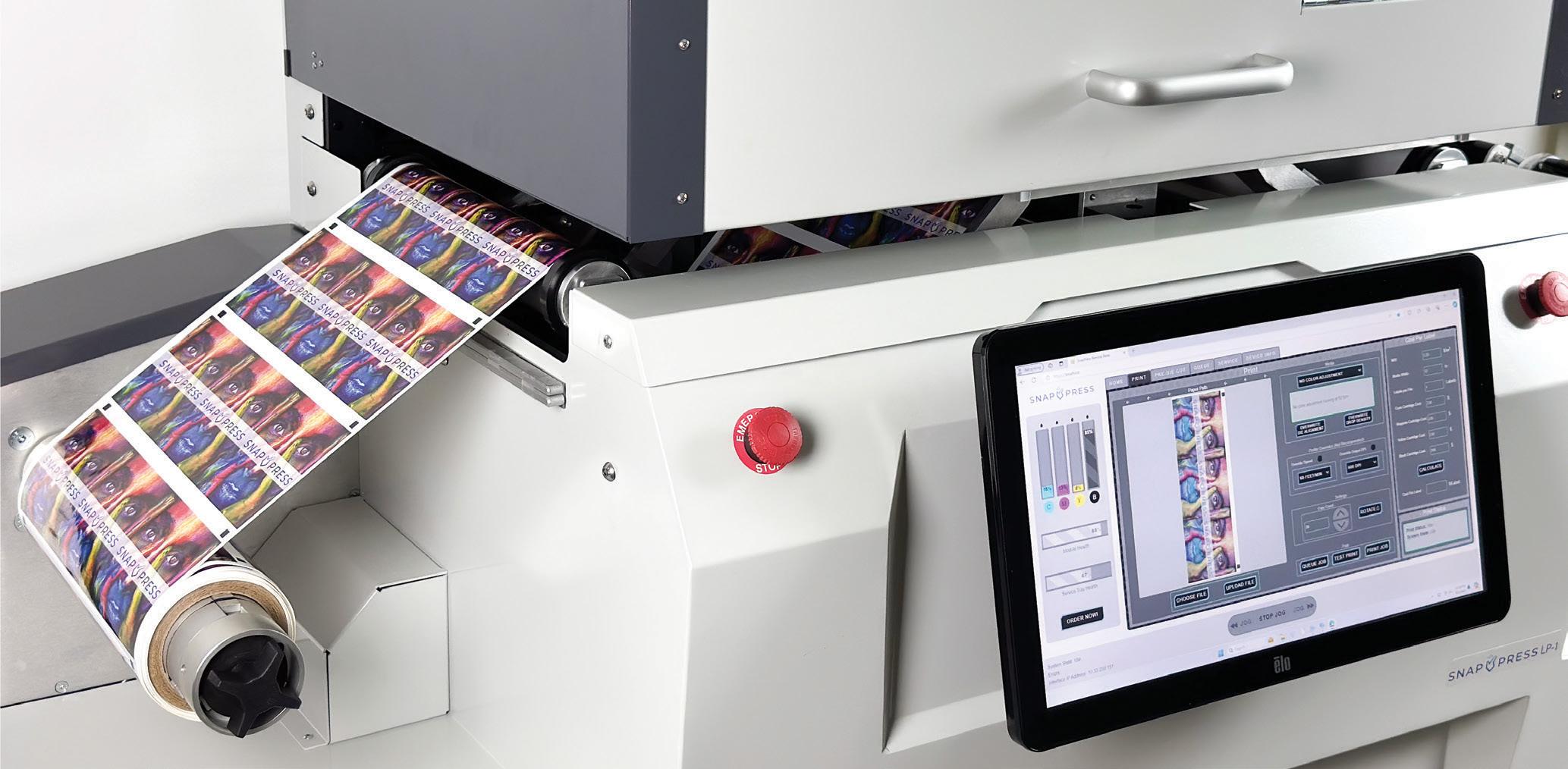



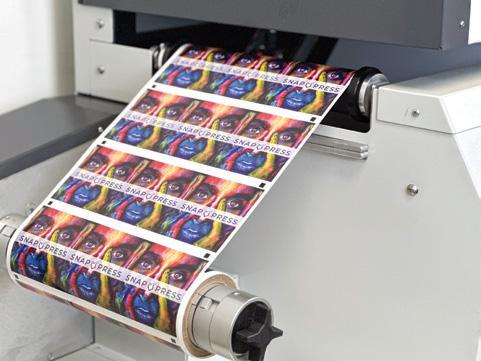


Print accuracy is typically dependent on the prepress handling of the files and applying the correct G7 Tone curve, or ICC Profile at time of printing. This part of the puzzle is not applied by the press operator, but by the prepress side of the organization. It is important to understand that most often, G7 curves are applied to a conventional press workflow (offset, flexography, web, screen) and ICC Profiles are generally applied to a digital (inkjet, toner, etc) press workflow. G7 tone curves relate to four 1 dimensional curves that affect tonality and gray balance of the print to provide a “shared” print appearance.
ICC Profiles take more work to create and apply but provide a more accurate result because it performs a four-dimensional transformation on the file and can affect all tints and all solids in order to perform a color match between printing devices. When customers are demanding an E-Factor match in the 3-4 range, it is much preferred to use ICC Profiles to convert the color for your output devices to match the target reference conditions communicated by the print buyer.
When dealing with the supply chain, the ramifications of using different color measurement instruments also comes into play. In any manufacturing industry, there is an Instrument Gauge Factor (IGF) which is used to compensate for the difference between different instruments. In the same way that twobathroom scales will display different weights even when stepping from one to the other, different measurement devices measure color differently and will compound the differences from the source. By using an Instrument Gauge factor and assessing instruments consistency based on E-Factor, it can be determined if certain instruments are not precise enough to be used in the given workflow. In addition, instruments can be harmonized to the brand companies master instrument to help greatly reduce between instrument errors, providing more tolerance for the print manufacture of the print to meet the customers desired E-Factor.
In addition to the variation of different measurement instruments, different lighting can also play havoc through the supply chain if not strictly measured and quantified on a regular time frame. Here too, E-Factor can be used to assess how consistent each lighting area is to itself, and how different each lighting area renders color to one another. If the lighting exceeds the customer E-Factor, then lighting has to be corrected to ensure the resultant color is not improperly illuminated which will cause a mismatch, when none exists.
The same benefit of calculating the E-Factor of lighting can eliminate many false causes for color mismatches. We have seen two ISO compliant light booths visually render the same print to be 3+ E-Factor differently from one another. Everything about the print was correct, but because the light booths illuminated the prints differently, the eye perceived an unacceptable match. The color of the light booth is critical for the print to look correct.
In the past it was very difficult to document the accuracy of light booths, but now, with affordable measurement devices and software, it is very easy to document the accuracy of light booths to the ISO reference, and document the consistency of light booths to themselves over time, and most importantly, document the differences of light booths to one another.
Manufacturing salable color is not easy, but it is very doable with proper color management and routine process control scheduled by a color conformance system. This type of system provides notifications for all operators in the supply chain to remind them when its time to check the printer/ light source/measurement instrument to ensure it is operating within E-Factor tolerances, and if it isn’t, it will immediately warn the operator that the component needs to be fixed to get it back into a salable condition. This Operator E-Factor report, created immediately when each print is measured, communicates to the operator of the printing device that the job they are printing is salable or waste. This immediately improves profitability and productivity because the operator knows by the E-Factor number if they can run production or fix the problem and then run once E-Factor is within tolerance. One E-Factor for all operators on all printing devices, anywhere, which eliminates subjectivity and holds all operators accountable to the same level of quality.
From a profitability standpoint, it is important to choose an E-Factor tolerance that your customers expect. If you choose an E-Factor that is too loose, you may lose customers because their expectations will not be met. If you choose an E-Factor number that is too tight, you may be over-promising and you lose money trying to achieve it. Profitability is critical to every print organization, and using the E-Factor metric can standardize manufacturing and help reduce waste by reporting the status of every job to ensure the product meets customer expectations.
Learn more about Gallus One with extended capabilities at: gallus-one.com
Heidelberg USA, Inc.
1000 Gutenberg Drive, Kennesaw, GA 30144
info@heidelberg.com, heidelberg.com/us

Powerful solo to harmonic ensemble
The Gallus One now integrates all proven Gallus Labelmaster modules, offering unparalleled flexibility, top-notch speed, and increased profitability. Easily add, remove, or replace units up- and downstream, including flexo and screen printing, cold and hot foiling, embossing, gravure, and die-cutting. Plus, the Gallus One is now available in 340mm and 430mm print widths and features an extended color gamut with additional Orange and Violet HEIDELBERG Saphira inks.

BY HEIDI TOLLIVER-WALKER
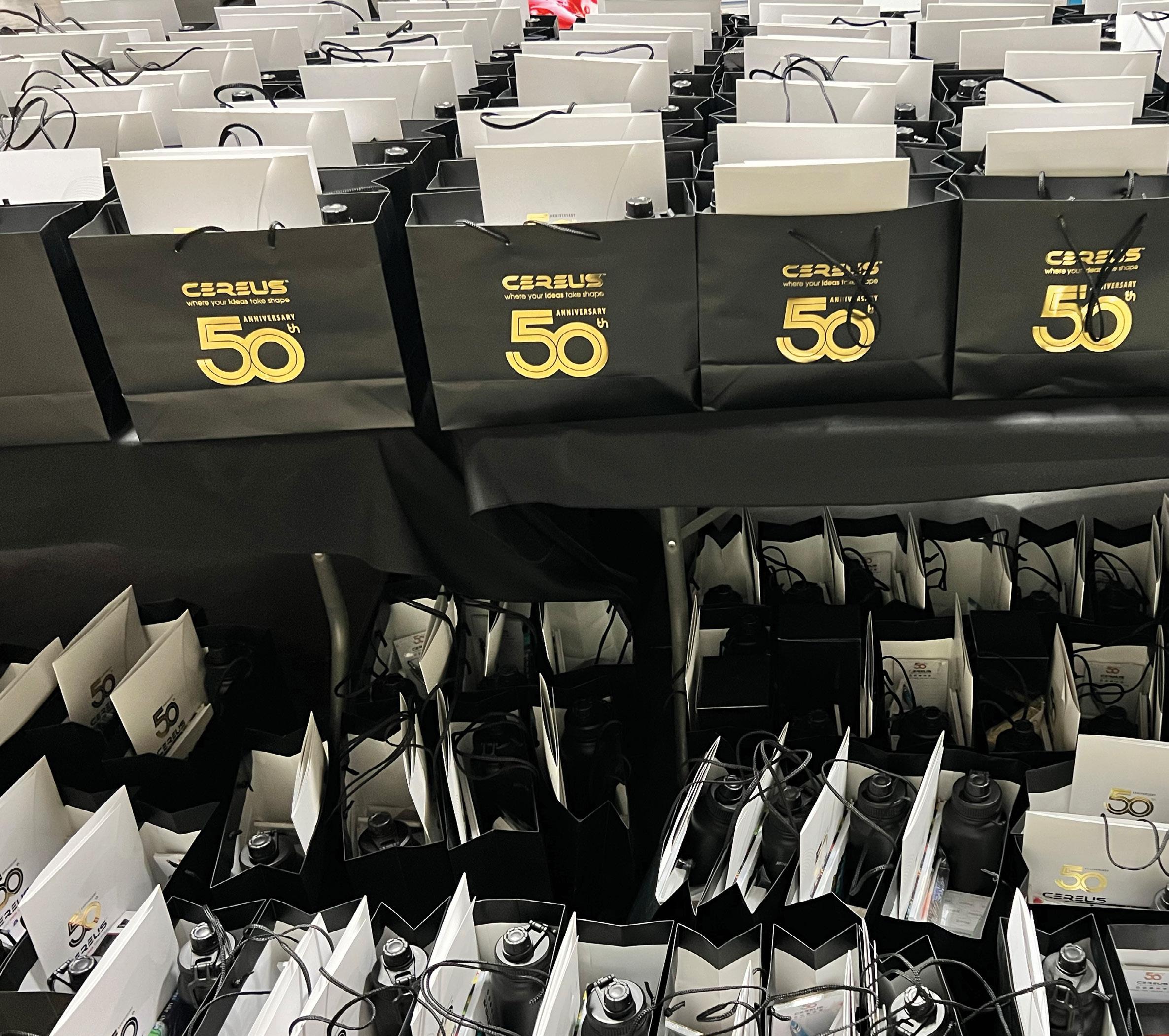
“It’s the quiet ones you have to watch.”
This phrase, one many of us have heard since childhood, remains true in business. Often, the companies that grow and expand without much fanfare are the ones that are suddenly celebrating double-digit growth and winning awards, leaving you to wonder where they came from.
That’s the story of Cereus Graphics in Phoenix, Ariz. Founded in 1973 as G&G Printers, the company became Cereus Graphics in 2001 after a series of mergers. Starting as a simple commercial print shop, it is now a regional powerhouse whose offerings include large format, packaging and design, labels, custom book publishing, booklets and postcards, promotional products, and embellished print. Services include marketing support and mailing.

Growth like this doesn’t just happen. It takes intentionality, and that intentionality can be summed up in the company’s philosophy: “to make customers happy.” It does this by adhering to a consistent set of guiding principles:
• To tell the truth without exaggeration.
• To earn customer loyalty by consistently being a cost-competitive, single-source provider.
• To turn orders quickly and encourage employees to work with a sense of urgency.
• To carefully inspect each project across all manufacturing processes to ensure the highest quality.
• To be enthusiastic and friendly.
While Cereus Graphics’ customer orientation is a key factor in its growth, another factor that makes it stand out is its success with embellishment. This focus is reflected in one of its catch phrases: “where your ideas take shape.” The play on words is, like all other aspects of the company’s business, highly intentional. Embellishment is a key component of the company’s success.
That expertise is getting noticed. In April 2024, Cereus Graphics made a splash at the Foil and Special Effects Association (FSEA)’s Gold Leaf Award for Excellence in Foil Stamping and Embossing, taking home Gold, Silver, and Bronze Leaf awards in multiple categories. In May 2024, it won the prestigious "Best of Category" in Cross-Media Promotion at the PIA Annual Print Excellence Awards, as well as excellence awards in Digital Enhancement Printing, Die Cuts & Pop-ups, and Embellished Invites.
What a long way Cereus Graphics has come from being a small family owned shop! Today, Cereus Graphics is a leading service provider throughout the southern United States where digital and offset print are only the beginning.

Cereus Graphics recently celebrated a significant milestone: its 50th anniversary. In October 2023, the company hosted a grand celebration for its employees, customers, and vendors. With nearly 300 people in attendance, the night featured a catered casino night and an open house, highlighting its state-of-the-art capabilities and commitment to excellence. The theme of the party was—not surprisingly—embellishment.
A highlight of the evening was the showcase of Cereus Graphics' Konica Minolta MGI JetVarnish 3DS capability. This cutting-edge technology allows for stunning embellishments, providing customers with the ability to create truly standout designs. Whether it's for book publishing or retail packaging, the JetVarnish 3DS brings a "wow" factor that differentiates products on the shelf and in the marketplace.
“Embellishment been a huge success for us,” says Tom Ginter, owner of Cereus Graphics. “Many of our accounts are in the spirits, beverages, and cosmetics industries, where packaging is everything. We saw a lot of opportunities for embellishment in these areas.”
Cereus Graphics also uses embellishment for other parts of its business, including posters, commercial work, flyers, and direct mail.
Speaking of the company’s many awards, Ginter adds, “We have an amazing designer who really knows how to work that machine, taking design to a whole different level. The only limit is your imagination. Our clients don’t have any limits on what they can achieve with this technology.”
While Cereus Graphics has won awards for combining embellishment with its offset process, Colin Walterson, president of Cereus Graphics, is thrilled about the addition of high-speed inkjet technology. Earlier this year, the company added a Konica Minolta KM1 high-speed digital inkjet press and began producing its first live jobs in May.
“We evaluated competing products and believe that the KM1 is the best digital inkjet on the market,” says Walterson. “With all the special and brand colors we use, color matching used to be challenging on an offset press. We could do it, but it was tough. With the KM1, the sheets come out perfect every time. The quality is very impressive.”
“Embellishment been a huge success for us. Many of our accounts are in the spirits, beverages, and cosmetics industries, where packaging is everything. We saw a lot of opportunities for embellishment in these areas.”
Tom Ginter Owner of Cereus Graphics
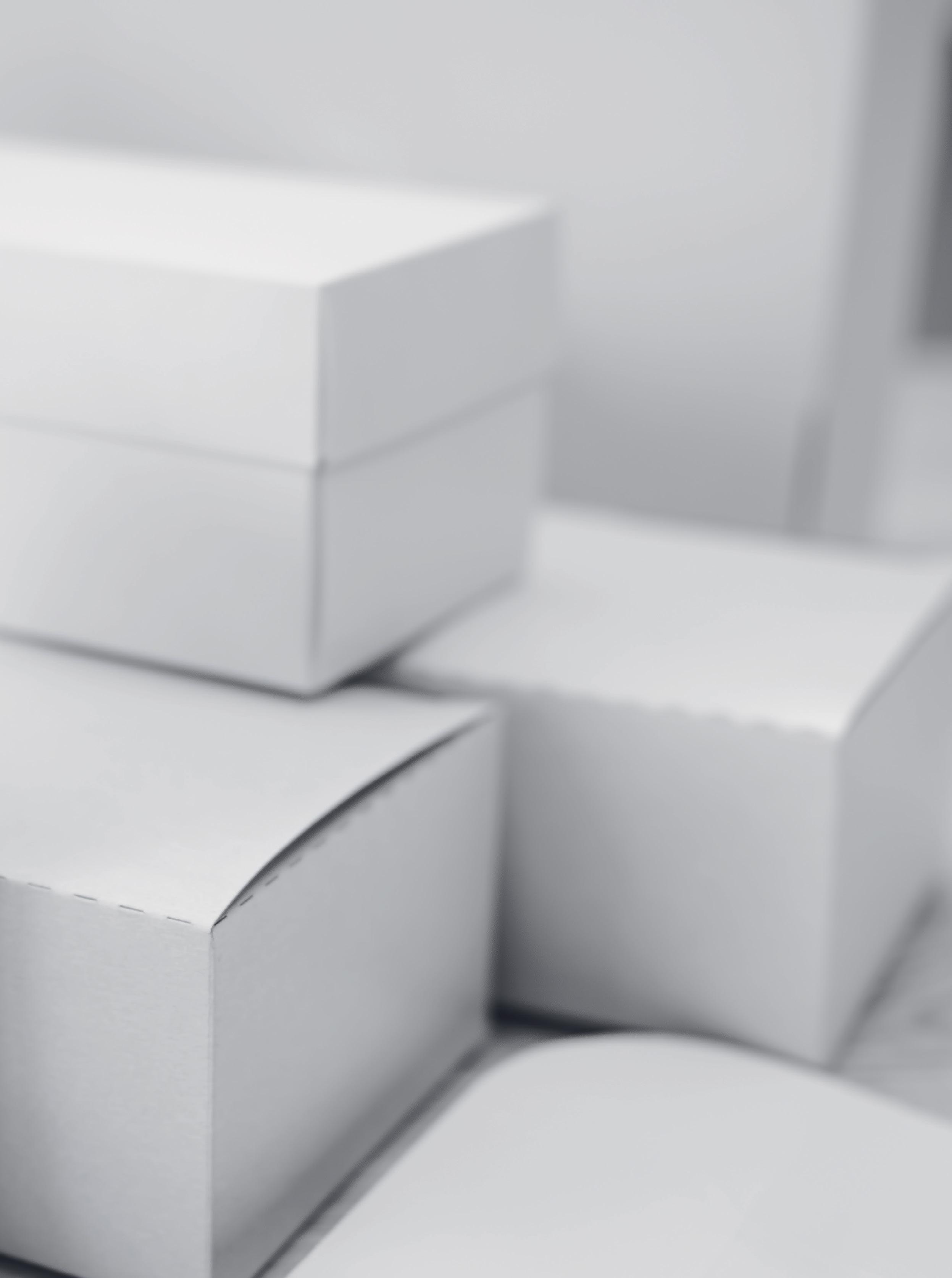
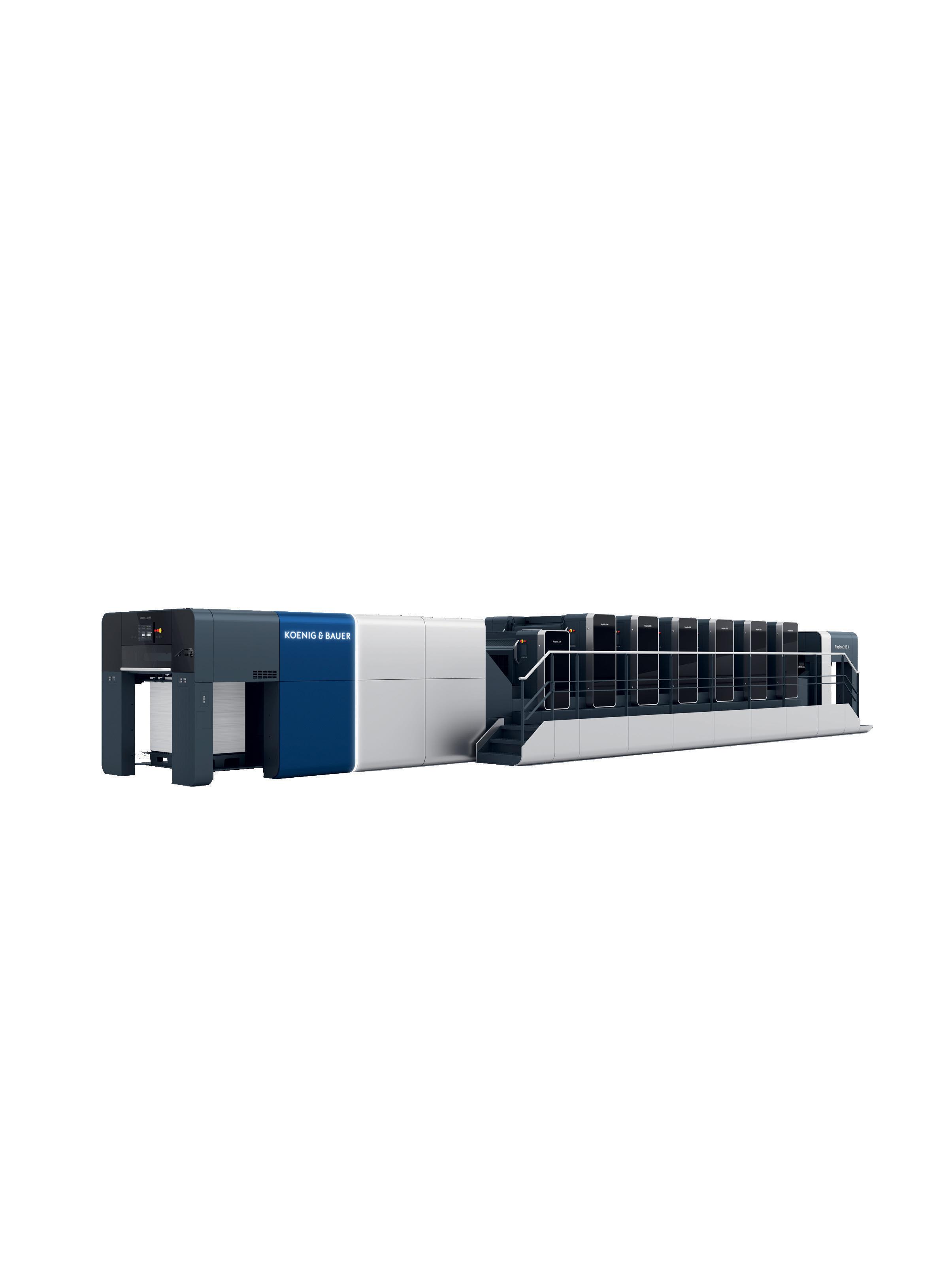
Walterson also appreciates that there's no makeready or waste. What's truly remarkable, he notes, is that the finish on the press is “bulletproof.” “You don’t have to laminate or coat it,” he explains. “The output can go straight into the bindery, even with packaging.”
Plus, Cereus Graphics can proof on the exact stock that customers will print on. “There are so many capabilities, and we’re excited to test them all,” says Jeff Schroder, Cereus Graphics’ production manager.
Some of the first print tests were on Yupo and synthetic stocks, with no pretreating required. “That was another selling point of the press,” says Schroder. “We are printing on the same paper we use on our offset presses.”
When asked, “What has surprised you the most about the combination of the new KM1 Digital Inkjet Press and the MGI JetVarnish?” Ginter just laughs. “I’ll let our awards answer that question.”
Just look at Cereus Graphics’ four FSEA Gold Leaf Awards:
• Best Use of Foil and Embossing—Gold:Cereus postcard using foil and spot UV finishing. The theme was “Digital Embellishment: Experience the Touch.”
• Best Use of Foil and Embossing for Folding Cartons—Bronze: Scottsdale Mint Bible Coin Box.
• Best Use of Digital Foil—Bronze: Cereus 50th Anniversary Promotional Piece.
• Best Use of Foiling and Embossing—Silver: Cereus Holiday Greeting Cards, embellished on the Konica Minolta MGI JetVarnish.
Cereus Graphics emphasizes the power of embellishment to create standout products. “When we introduce customers to embellishment, our goal is to show them how it can solve key challenges,” Ginter explains. “We talk about how it helps their products stand out on the shelf and ensures that their mail pieces grab attention instead of being discarded.”
Embellishment offers unique advantages, such as enhanced visual appeal and tactile experiences that make products memorable. “Our clients see the value in creating something that truly differentiates their brand,” Ginter says. “The impact of a beautifully embellished piece can be significant, driving customer engagement and loyalty.”
Additionally, the process of embellishment can lead to savings by eliminating the need for traditional dies. “Not only do our clients benefit from a striking product, but they also appreciate the efficiency and potential cost savings that come with modern embellishment techniques,” says Ginter.


One effective way Cereus Graphics demonstrates the value of embellishment is through hands-on experiences. “We encourage participants to bring us their projects, and we help them design pieces that truly showcase the benefits of embellishment,” Walterson says. “There is a learning curve, so we host lunch-and-learn sessions. These sessions help clients see what’s possible.”
Packaging is one market where embellishment is really taking off. When asked why, Walterson shares an example of a client in the cosmetic industry. The original design was simple, but after attending a lunch-and-learn and plant tour, the client decided to test a design with foil and raised UV.
“We created a prototype on the MGI, and they left with a new design featuring embellishments,” he says. “It has a texture you can feel. They loved it so much that we currently have four pieces in-house. We’re excited to see the impact once these packages hit the retail shelves and see how they perform.”
While Cereus Graphics prides itself on its technology, the true differentiation lies in its people, whom Ginter describes as “just awesome.”
Cereus Graphics only hires team members who have positive attitudes, a concern for others, and a high level of attention to detail. “We have the best crews,” concludes Ginter. “They have years of experience and are well trained, enthusiastic, and caring. Plus, everyone knows what the goal is. When we all share the same vision and strive to implement it for our customers, good things happen!”
Judging by Cereus Graphics’ success, that strategy works.
Good things have been happening at Cereus Graphics for 50 years, and that is something we can expect to continue. But if Cereus Graphics keeps winning awards, it will be hard to keep its profile low much longer.




















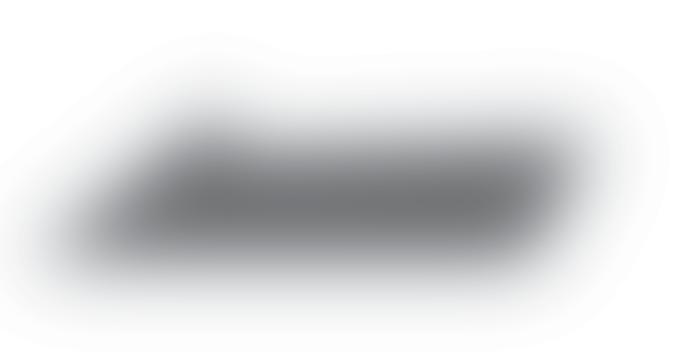






PBY KATRINA EDWARDS

rinted packaging is everywhere. Take a good look around the next time you are in any retail store, pharmacy, or gas station, and you’ll find yourself surrounded by packaged products. Take a closer look, and you will see that many of these products are in folding cartons. Folding cartons come in all shapes and sizes, often with eye-catching embellishments, and sometimes with sophisticated security features. In this article, we will dive into the world of folding carton; its growth trajectory, market trends, and an overview of the manufacturing process.
Let’s start by looking at some statistics about the packaging industry and where the folding carton segment fits in. It should come as no surprise that the global packaging market continues its long growth trajectory. The current size of the entire packaging industry is USD 1.14 trillion and is expected to grow to USD 1.38 trillion over the next five years.

Source: Mordor Intelligence
Folding carton is one of the primary segment types in the packaging industry, accounting for USD 141.43 billion, or a bit over 12.4% of the total industry. Folding carton, along with flexible package printing and labels together account for nearly 1/3, or 32.36%, of the total packaging industry (the “Everything Else” in this chart is just that; everything from metal, glass and plastic containers, to wrapping paper, bags and packing peanuts.)
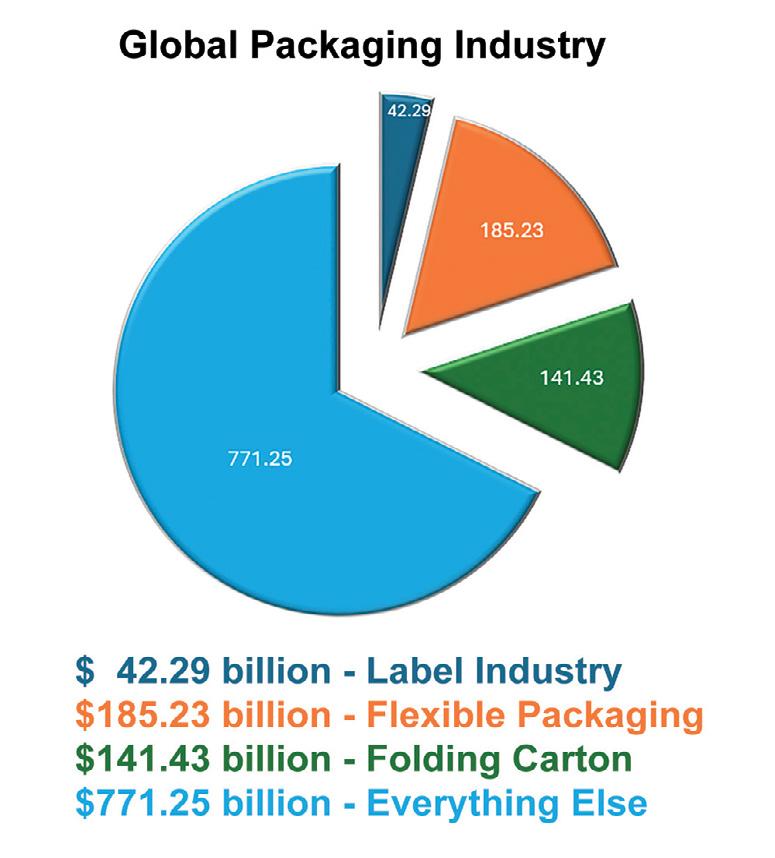
Source: Mordor Intelligence & Straits Search


Source: Smithers 2023 – The Future of Global Packaging to 2028
Of all the materials used in the packaging industry, paperboard, the key substrate for folding cartons, is projected to grow by 31.5% by 2028. That’s the fastest growth area in the packaging industry, followed by flexible packaging and plastics.
These statistics show that the folding carton segment will continue throughout the rest of this decade and likely well into the future. What’s the reason for this growth? After all, folding cartons are nothing new, they have been mass-produced since the concept was first developed in the late 1800’s. [Quick bit of trivia here: Robert Gair, inventor of the mass-production of cardboard boxes, got the idea after a metal strip that had been left too high on a press, accidentally cut the paper instead of folding it. Gair had a eureka moment and realized he could cut and fold paperboard simultaneously on his platen presses. The folding carton business was born.]
One major reason for the growth in folding cartons is they play well as a sustainable packaging option. Today, there is a huge call for a reduction in the use of plastics. According to watchdog organization Our World In Data (ourworldindata.org), the world produces about 350 million tonnes (771.7 billion pounds) of plastic waste every year, of which 0.5% (1.7 million tonnes or 3.75 billion pounds) end up in the oceans. Another 82 million tonnes (180.8 billion
pounds) of waste are mismanaged and become littered plastic. According to studies cited by The Center for Biological Diversity, there is not one square mile of ocean anywhere on Earth that is free of plastic pollution.
Consumer awareness around sustainability is strong and growing (the many images and videos on social media showing sea animals tangled in plastic make a compelling argument that something must be done). According to the most recent Green Buying Report1 based on a survey of 9,000 consumers, 70% identify as “environmentally aware” and 60% consider it important to purchase products packaged in environmentally friendly materials. Looking at younger consumers (18-44 years of age) 86% say they are willing to pay more for products in sustainable packaging. So there’s a market for it.
In addition to consumer expectations around packaging sustainability, there is new legislation that can hold packaging producers responsible for packaging waste. Extended Producer Responsibility (EPR) policies hold producers responsible for the end-of-life management of their products. Think of things like tires, mattresses, batteries, and paint cans – most of us know these are items you can’t just toss into the trash in most states and that’s due to EPR legislation around them.
Now a wave of EPR legislation for packaging is hitting the U.S. with five states – California, Colorado, Maine, Minnesota, and Washington – having passed EPR for packaging bills and ten more having
1 buyinggreen.triviumpackaging.com
introduced EPR legislation for packaging in 2024. The “producer”, in the case of packaged products, is the brand owner, manufacturer, converter, and importer of packaging. Under EPR, packaging producers can be required to fund the recovery of packaging after the “use phase.” To learn more, visit the Sustainable Packaging Coalition at epr.sustainablepackaging.org.
As brands and packaging manufacturers are being held to clean up on packaging waste, folding carton becomes more appealing. Folding cartons are easy to recycle – far easier than many other forms of packaging. According to the EPA, approximately two-thirds of the paper and paperboard waste in the U.S. is recycled. Paperboard comes from raw, natural materials like wood pulp, hemp, bamboo, and bagasse and it can even be made from molasses and mushrooms! The production and recycling processes for folding cartons are generally more energy and water-efficient, contributing to a lower carbon footprint compared to plastic counterparts. And from a marketing perspective, it just looks good for your brand to switch to more eco-friendly packaging options, including folding cartons.
Of course, sustainability considerations aren’t the only reason the folding carton market is on the rise. Folding carton is an exceptionally versatile form of packaging. Folding cartons are simply easy to transport. Since the pandemic, there has been an increased focus on supply chain management and on reducing reliance on materials that are more difficult to source, must be shipped from other countries (like many plastics), or are more difficult to transport. Folding cartons are lightweight and stackable, both during shipping and on store shelves.
Advancements in printing and converting technology have enabled ever more sophisticated and customizable folding carton designs. They can be matchbox-sized or giant-sized, square, rectangular, hexagonal, round, even bottle-shaped. They can be embellished with EV, foil, embossing, debossing, windowing, or made with special substrates. Folding carton printing is not limited to any one type of manufacturing process; they’re printed on offset presses, flexographic presses, and, increasingly, digital presses.


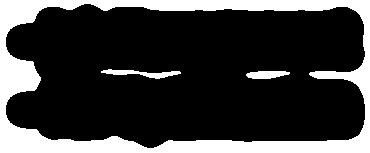


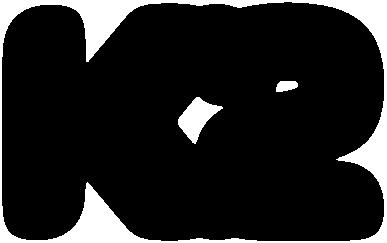



Speaking of digital, the digital printing market for packaging is projected to grow from USD 30.2 billion in 2024 to USD 46.2 billion by 2029 at a CAGR of 8.9% according to a recent study by Research and Markets.2 Digital package printing has opened the door to smaller production runs that give brands to opportunity to test market new products in limited batches. It also makes professional packaging an option for small, local companies. And it opens the door to hyper-customized, and personalized packaging with the variable data options inherent in digital devices.
And we can’t forget that the increase in online shopping and direct-to-door product delivery contributes to the segment’s growth. As of 2024, 2.71 billion people are shopping online – one-third of the world’s population.3 Further, in 2024 over 20% of retail purchases happen online and this percentage is predicted to continue to increase annually. This is a huge boon for the corrugated packaging segment, but it can be argued that the packaging of the products inside that outer box is just as important as they are on the store shelves. Consider the thousands of “Unboxing” videos, especially of electronics and toys, which have become a social media phenomenon. Culturally, “unboxing” is now expected to be a satisfying experience in itself!
On one hand, packaging is getting more sophisticated, with personalized messaging, and fancy embellishments. On the other, thanks to the sustainability movement, some brands are moving to simpler, easy-to-recycle packaging. Here are a few trends in the folding carton segment.
If you’re paying hundreds or thousands of dollars for a bottle of whiskey, you want to know it’s the real thing. Counterfeiting in luxury items, and even some not-so-luxurious items, is a real and growing problem, especially as products like whiskey are becoming not just collector’s items, but investments.
Anti-counterfeiting solutions for cartons, such as tamper-evident seals, holographic labels, and trackand-trace technologies which allow companies to monitor products through the supply chain.
The Internet of Things (IoT) has been a “thing” for quite a while, and for cartons, this includes sensors and connective features that can report unauthorized opening or tampering.
Smart packaging is also a marketing tool. Some are calling this “immersive packaging” which can be as simple as QR or another type of linking code that takes the consumer to a website, plays a video or music, or launches an interactive game or augmented reality experience.
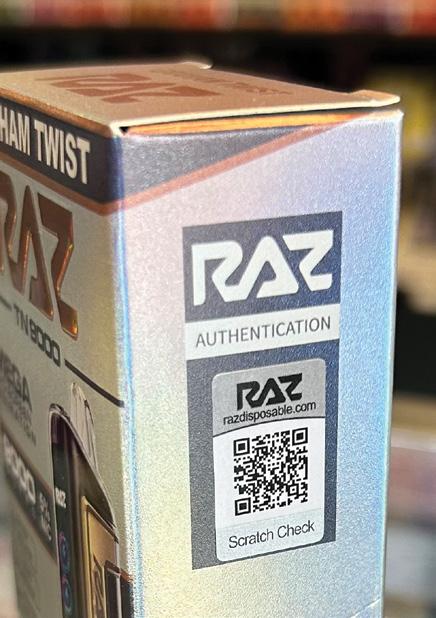
It may not exactly be a folding carton, but Frugalpac Frugal Bottle is constructed out of 94% recycled paperboard and is five times lighter and six times lower the carbon footprint than glass bottles. It allows for printing on all sides, provide quite the packaging “billboard” for brands.
The demand for ready-to-eat foods is growing and along with it, the demand for convenient packaging that is easy to story and dispose of. And believe it or not, there’s a growing trend around edible packaging.
Sensors, holographic labels and RFID tags may be fine for cartons containing luxury or controlled products, but there’s also a movement toward simpler, sustainable packaging, especially in the food sector. Many brands now want options for packaging made of bio-based substrates. Paperboard can be made of materials like bagasse, a fibrous material that comes from harvested sugarcane, hemp, and eucalyptus bark. Coupled with bio-based inks, these packages check all the boxes for brands and consumers who wish to support sustainable packaging.
2 www.researchandmarkets.com/report/digital-printing-packaging
3 Marketer, Statista.
Because packaging is a top growth area in the printing industry, package printing has been touted as a space where commercial printers might want to expand. Depending on the equipment a company has or is willing to invest in, this is certainly an option. One of the main areas that a commercial printer may have to invest to produce folding carton, is on the finishing side. You will need die-cutters, folder/gluers, possible foil and embossing on a flatbed. Before adding equipment, it may be possible to get started by partnering with an existing folding carton company.
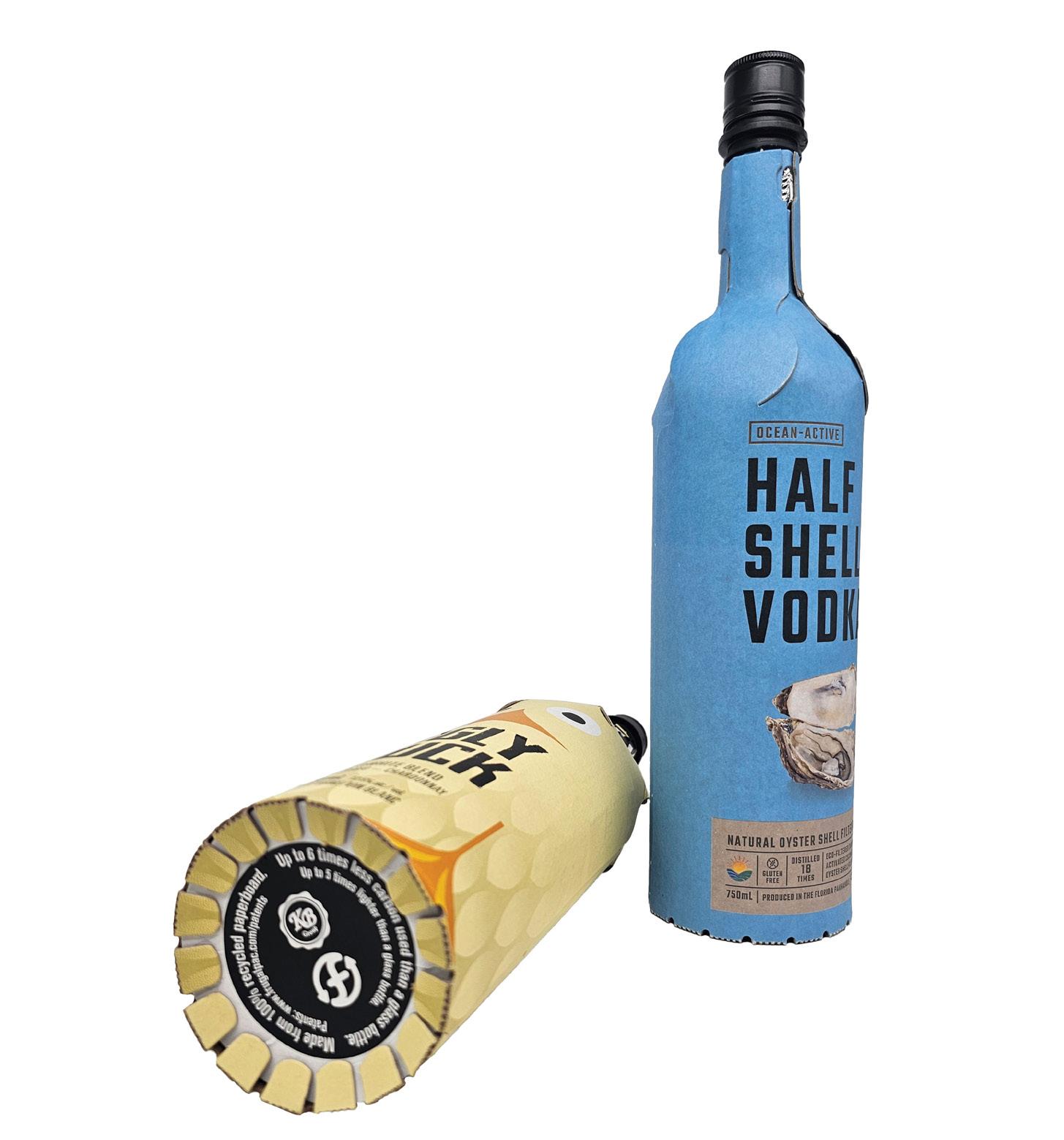
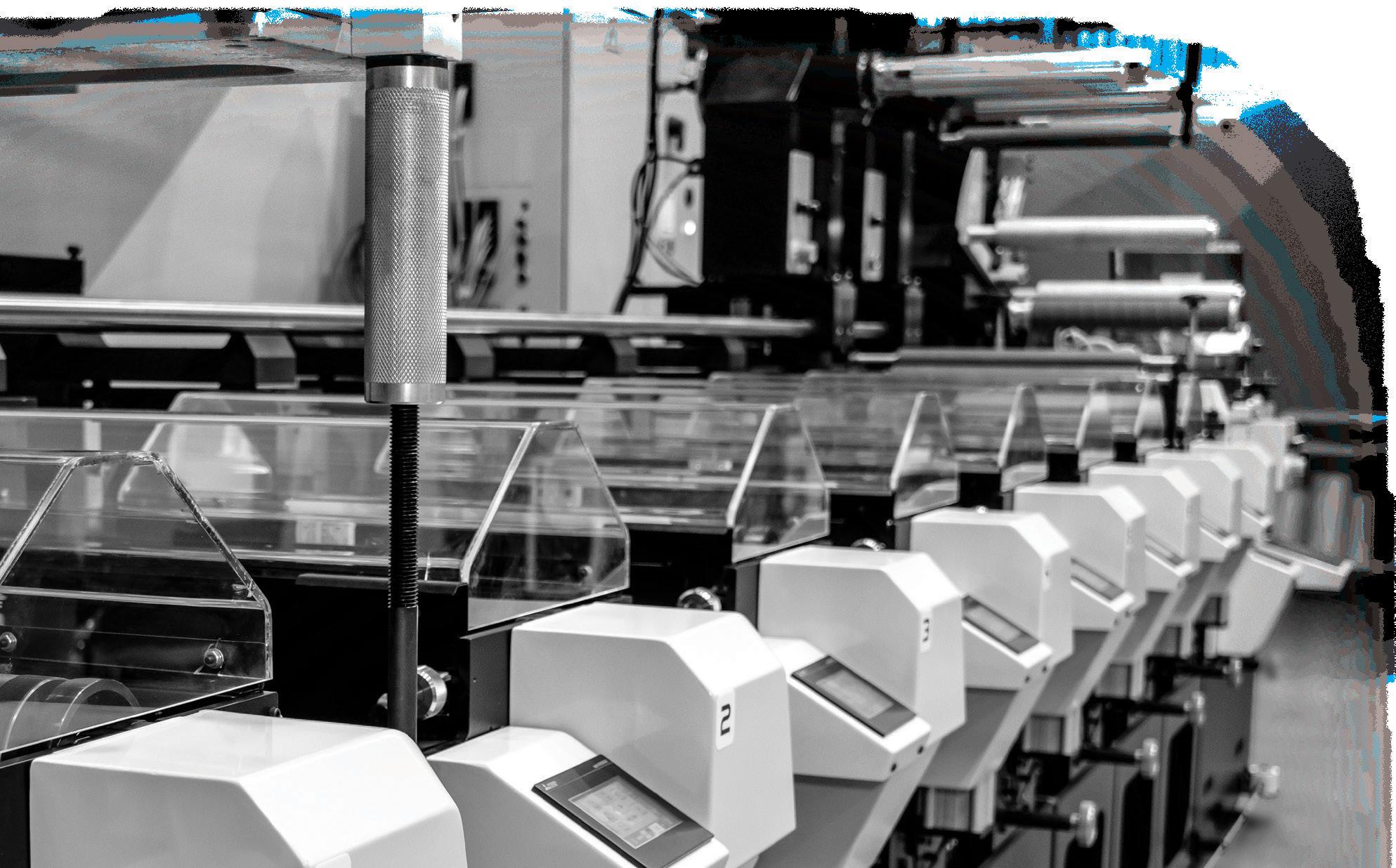
77 Years

10k+ Installations
93 Countries
5,700+ Customers
360° Support
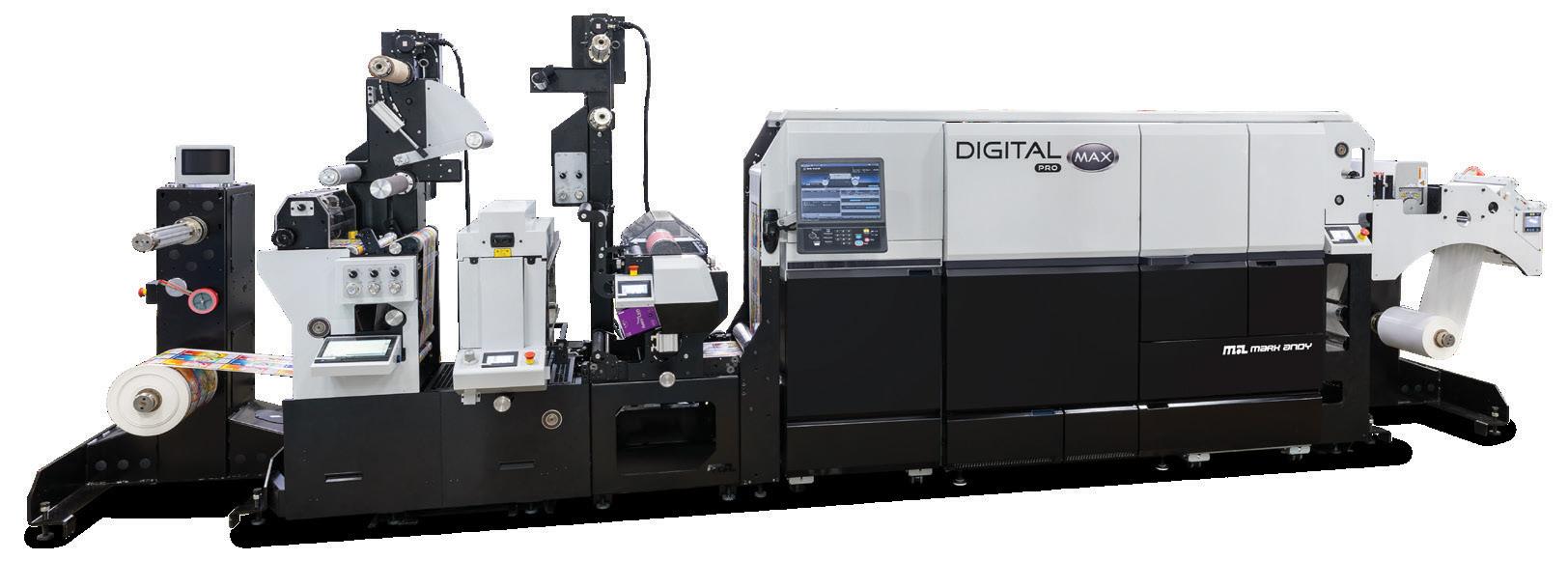

Make confident decisions with our expert insights and up-to-date market data, guiding your business with the latest trends and developments.


A
BY CARY SHERBURNE

Alot of the discussion around volatile organic compounds (VOCs) has revolved around creating a safer workplace in printing and packaging companies using solvents—both in flexo platemaking and in the press room. But what happens when VOCs exit the building’s exhaust system?
According to the U.S. EPA1, “Volatile organic compounds are compounds that have a high vapor pressure and low water solubility [and] typically are industrial solvents, such as trichloroethylene.…VOCs are emitted by a wide array of products numbering in the thousands. Examples include: paints and lacquers, paint strippers, cleaning supplies, pesticides, building materials and furnishings, office equipment such as copiers and printers, correction fluids and carbonless copy paper, graphics and craft materials including glues and adhesives, permanent markers, and photographic solutions.”
In that list, you probably see several things that are common in your production environment—and even in your office environment. Another emission we probably don’t think much about but which can be equally harmful to our planet when emitted into the atmosphere is ozone, a chemical that is made of three oxygen atoms joined together. The EPA’s Acid Rain Glossary2 notes that there are two types of ozone: good and bad. “Good ozone is found high in the Earth's atmosphere, and prevents the sun's harmful rays from reaching the Earth. Bad ozone is found low to the ground, and can be harmful to animals and humans because it damages our lungs, sometimes making it difficult to breathe.” Ozone has a very characteristic pungent odor, sometimes described as like chlorine bleach, and it can sometimes be detected after lightning strikes or during electrical discharges, according to the California Air Resources Board3.
1 https://www.epa.gov/indoor-air-quality-iaq/what-are-volatile-organiccompounds-vocs
2 https://ofmpub.epa.gov/sor_internet/registry/termreg/searchandretrieve/ glossariesandkeywordlists/search.do?details=&glossaryName=Acid%20 Rain%20Glossary
3 https://ww2.arb.ca.gov/resources/fact-sheets/what-ozone/printable/ print#:~:text=Ozone%20has%20a%20very%20characteristic,as%20 low%20as%200.05%20ppm.
Understanding what these emissions are is one thing; preventing them from getting into our fragile atmosphere is another. That’s why we were intrigued when we saw a press release from Ship & Shore Environmental, Inc. (https://shipandshore.com/) about their Regenerative Thermal Oxidizer solutions, or RTOs, a new term for me, and likely for you as well. We spoke with Ship & Shore CEO and President Anoosheh Oskouian to learn more.
WhatTheyThink: Anoosheh, thank you for speaking to us. Let’s start with a brief overview of Ship & Shore Environmental.
Anoosheh Oskouian: Our company specializes in design, engineering and manufacturing of pollution control systems, which are mostly related to VOCs and any emissions that may be coming off of any industrial facility, of any size, that are not allowed to go out to the atmosphere and have to be captured and controlled. That is usually governed by the rules and regulations in various counties and states all around the country.
WTT: We recently saw some information about your regenerative thermal oxidizers (RTOs), especially as it relates to the flexographic industry. I know from working in the industry that more than 70% of flexographic operations use solvent-wash plates, as well as solvents in other parts of the operation, including the press room. Can you explain what RTOs are and how that relates to making the flexographic printing industry more sustainable and why they are important?
AO: RTOs, and as you fully have stated the name, regenerative thermal oxidizers, are a system that is designed to capture not only all the VOCs and the emissions from solvent use within the printing industry, but disrupt it and get rid of it, for lack of better words, in a much more efficient way, rather than just, sending it through a regular thermal oxidizer. In the olden days, if people had to do emission removal, they always looked into thermal oxidizers or a recuperative unit that had a heat exchanger, and that caused a lot of other problems. We came up with a very unique design that captures all the heat that has been generated as a result of the VOCs that go through the system, and it retains most of the heat inside through a special ceramic media. So a very small amount of additional heat has to be created with the burner of the unit. As a result, companies do not have to use a lot of natural gas, just very small amount to just get the system started up, to be able to disrupt all the emissions that are coming through the unit.

Regenerative Thermal Oxidizer Technology (RTO). RTO achieves 98% to 99% destruction efficiency and 95% to 97% nominal thermal efficiency.
AO: The word neutralizing is correct; however, basically through a process of combustion, it uses the VOCs and the solvents that have very high heating value as a source to take it through the process. And on the other side where the stack of the unit is, or the chimneys, some people refer to it, you basically output clean air. We remove about 98% of the pollutants. And in occasions where they need 99%, we have 99% removal and destruction of those pollutants by our systems. I should also mention that another contaminant we can remove with these systems is ozone, emissions of which are also controlled by regulatory agencies.
WTT: Do you see most of these emissions coming from the platemaking operation?
WTT: So what you are saying is that it neutralizes those emissions? Am I understanding that correctly?
AO: That’s part of it, certainly. But the other reason there are increased emissions has to do with the use of solvent inks on packaging that has a much higher percentage of ink coverage due to the demand for more graphics on packaging, including films, plastic bags, stand-up pouches and more. That’s one of the reasons we are having to deal with a lot more solvents and a lot more VOC emissions that can be collected and neutralized by our systems instead of being released into the atmosphere.

WTT: Ultimately, brands and retailers will be required to report on Scope 3 emissions, which includes the entire supply chain behind their products, cradle to grave. And that includes printing. When you are out talking to the market, are you usually talking to the brands and retailers or the producers?
AO: Ninety-five percent of the time, we are talking to the manufacturers and the flexographic operations that produce all of the packaging for the end users. Sometimes there are companies that are the producers of the product that goes inside the packaging that are interested in knowing the impact of the packaging on Scope 3 emissions.
WTT: So an RTO is an item that they add to their external exhaust fans?
AO: It’s a good-sized piece of equipment that usually sits outside of their facility. We do an assessment of the facility on the production floor to determine how best to collect the exhaust that is coming off of each one of the ducts they have on their roof. One RTO system can collect the emissions from all of the exhaust ducts and provide clean air on the other side.
WTT: Where can readers get more information about these systems?
AO: They can visit us at www.shipandshore.com. They can read about the technology, take a look at some of the applications, and check out our technical write-ups.
WTT: I’m assuming that especially larger packaging and other printing operations are starting to get some pressure from their customers and/or regulatory agencies to reduce or eliminate those emissions. So your analysis can tell them what is going into the air in terms of VOCs and ozone, and they can make a decision from there?
AO: Absolutely. I have been involved with this industry for many years, and most recently, we are noticing that not only the brands and retailers, but also consumers, are much more interested in making sure they buy from companies that are environmentally conscious.
WTT: These look like large systems. What is the price range, and do you have systems that are affordable for smaller companies?
AO: There is no ballpark figure as systems can start from $100K to $1 million depending on the size of the operation and number of presses and laminators running. However, there are many innovative approaches to reduce cost effectively and efficiently. We provide systems for a small facility and operation to multi location billion dollar operations. As a customized system provider, we are able to accommodate based on the client’s need and requirements.
WTT: I know you are located in California, which seems to lead the way in implementing a lot of the environmental regulations. But do you see this happening in other regions as well?
AO: As you mentioned, we are in California where a lot of major rules and regulations and environmental rules are very tight. However, we're noticing that a lot of other states are following the footsteps of what is going on in California. We do work in all the states, as
well as Canada and a number of other locations. We are seeing increasing interest in solving the problems that our solutions help with, and we are pleased about being able to help with reducing the amount of pollution that goes into our atmosphere.
AUTHOR’S NOTE: While systems like this look like a big—and perhaps optional—expense, printing and packaging companies should be planning to implement them, as eventually they will be required to do so. What you don’t want is to end up with investigations or in court like Tesla in California which will end up costing more, financially and in aggravation, than proactively investing in systems that emit clean air.



BY MARY SCHILLING
Awise man once said, “whoever figures out the chem-stack wins.” This has never been truer than for the flexible packaging market. Flexible packaging is composed of varying substrates sandwiched on each side of what is called the chemstack. The chem-stack is a combination of chemistry which serves many purposes for lamination, ink adhesion, wet-out, print, color quality and bond strength.
Digital inkjet printing has impacted most industries over the last 10 years, but flexible packaging has been the slowest to integrate inkjet due to the sheer complexity of the materials used and the challenging chemistry requirements to ensure successful lamination.
Paper Converting Machine Company (PCMC) is part of the Barry Wehmiller Converting Solutions (BW) family. Acquiring technology companies serving the packaging and mailing industry, the BW family manufactures varying equipment such as Fusion

flexo presses, mail solutions, pouch-making lines, inline print camera systems and their new ION press for flexible packaging.
PCMC seems to have solved the chem-stack puzzle for flexible packaging with their new ION platform. Working over the past year with internal manufacturing, chemists and vendors, the ION team has developed a repeatable chem-stack “recipe” for substrate, ink compatibility, wet-out, ink balancing and drying on non-porous PET poly flexible materials printed at high speeds. This recipe creates the perfect condition for reproducing detailed text and imagery on finished, laminated packaging.
The ION is a digital/hybrid flexible and folding carton solution designed to remove industry barriers of quick change, quick turn, on demand variable printing barriers for flexible packaging.
The ION is highly configurable. Flexo decks and modular extended drying can be integrated for pretreatments, OPV’s or ink stations pre and post of the Memjet DuraLink 2.1pL, CMYK aqueous pigment thermal print heads. Available with inline lamination, the ION is offered in web widths of 32-, 36-, 42-, and 52-in. utilizing 42-in. OD roll, running up to 400 fpm at 1600 dpi cross web and 790, 925, or 1600 dpi downweb resolutions (speed dependent).
The ION jets a 2.1pL drop which eliminates any graininess or ink plugging typically seen when reproducing challenging highlight/shadow balance of flesh tones.
Using high chroma aqueous pigment process inks expand the color gamut beyond CRPC6 opening the color simulation Pantone library to 72% using only

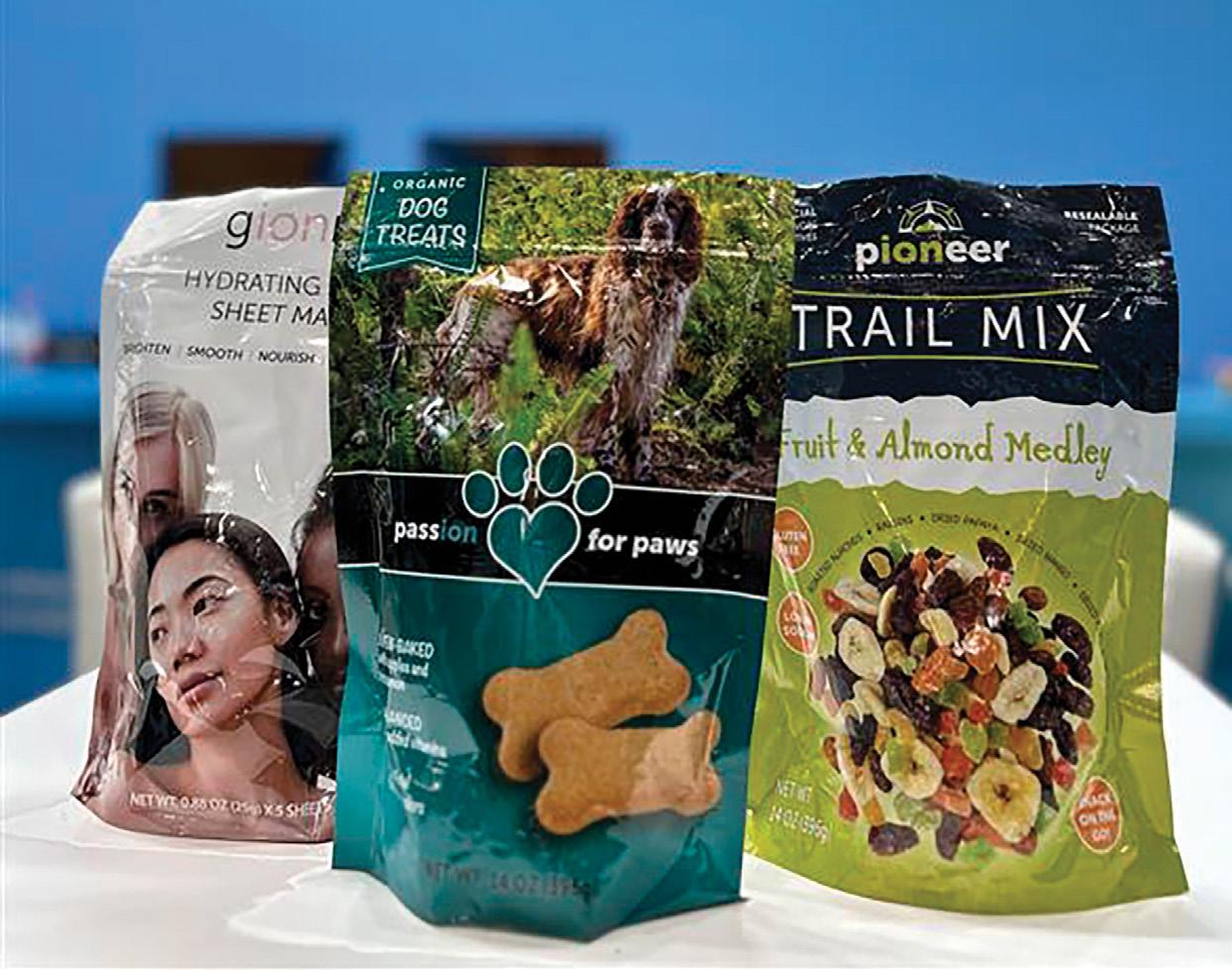
CMYK process colors. If there is a color requirement out of gamut, the color can still be printed on target by a flexo station.
Market need is the ION’s core focus, creating a digital quick change print process, multiple SKU’s can be printed across the web, while honoring profitable lineal feet requirements. Ganging jobs allows graphics to change on demand using inkjet, while any primers, OPV’s and spot or flood ink requirements use flexo.
The PCMC division of BW Converting Solutions showcased their new technology the week of April 22, 2024, at their Open House in Green Bay, Wisconsin. This event consisted of industry and vendor expert presentations, customer breakout sessions, Fusion CI press demos and PET flexible packaging printing on their new digital hybrid ION press.
PCMC designers created a series of flexo challenging graphic packaging printing on 48 ga PET in reverse with a flood flexo white. Samples pulled from the rewind showed high quality detail which the small drops can achieve at a printed resolution of 790×1600 at 400 fpm.
Hosting 130 customers across various lines of package printing, BW’s open house proved to the market this traditional, flexography focused manufacturer is embracing the need to merge digital inkjet into conventional processes to satisfy the requirements which their customers are facing today.
Vague musings, name-dropping, streams of consciousness and occasional flashes of brilliance...from Johnson’s World.
BY STEVE JOHNSON
Knorr brand sauce and gravy mixes make a great shortcut if you don’t have the time, the culinary skill, the ingredients, or the patience to make your own pesto, hollandaise sauce or chicken gravy. They are rather heavy on salt, corn starch, and monosodium glutamate, meaning their market focus must be on an older demographic rather than health-conscious young folk who carefully read ingredients.
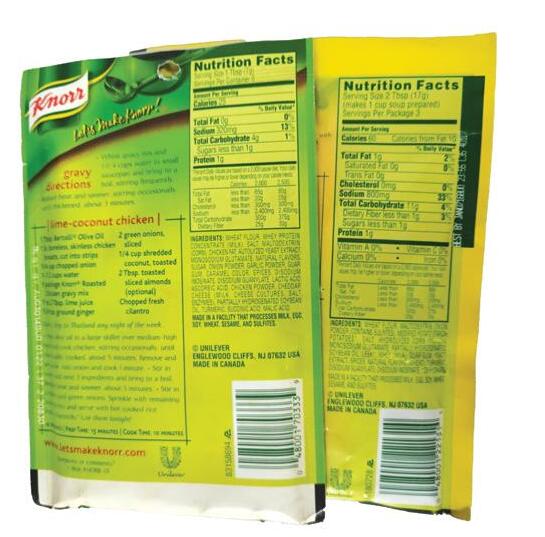
That’s one of only two plausible explanations for the ingredients, recipes, and preparation instructions on the package being printed in 4 point type, Optima face, green on green. No one over the age of 30 can read the package. Might the company have intentionally obscured its nutritional information? I think this unlikely, since serving instructions and recipes were subjected to the same treatment.
Unfortunately, the other explanation is carelessness. Some designer dreamed up the style. My guess is that after it was approved the type size was reduced to fit all the great marketing copy onto the small envelope in which the product is packaged. Some printer is probably proud that he was able to resolve the tiny, thin typeface without plugging, not worrying that it was unreadable without a magnifying glass.
This is a great opportunity for a package printer, the last line of defense, to alert his client of their mistake. The combination of font size, type face, and color choice make the package virtually unreadable, which should be no different than discovering a typo or a low-res graphic.
Here’s a great chance to add value and demonstrate your professional acuity even if you haven’t been involved in the creative process.
Many people assume that Gutenberg’s Bible was printed in German. In fact, the translation typeset and printed by Gutenberg was St. Jerome’s Latin Vulgate. Working 63 years before the Reformation rocked Germany, Gutenberg’s project had the full blessing of the Roman Catholic Church.
Does anyone remember what Gutenberg did to follow up his famous Bible project? His second publication was De Officiis or “On Duties,” the final work of Roman Republican statesman Marcus Tullius Cicero. It was also printed in Latin.
Today, Gutenberg, his movable type, and his printing press are universally haled as the single biggest influence on the evolution of Western Civilization. Ironically, neither Latin, nor the Bible, nor the works of Cicero, are taught in today’s Ivy League universities, which also seem determined to eliminate the printed textbook. So much for Western Civilization.
“The cost of accommodating the dilettante is a demeaning of expertise.”
—Nicholas Carr in The Glass Cage
My nephew likes to needle me about my love of all things printed and paper, so I take pleasure in using printed materials to acknowledge his birthday. One year I sent him a telegram, much to his shock.
Yes, telegrams are alive and well, thanks to sendtelegram.com who picked up the slack after Western Union exited the business. For as little as $30 you can send a “wire” which will be printed out and hand delivered by courier in a sealed envelope, usually same day.
Congratulatory telegrams such as mine are a relatively small portion of their business. Their biggest single niche is cancellation notices, which must be served within a time window specified by contract. The hand-delivered printed telegram satisfies the contractual demand for cancellation to be served in writing.
This is a great example of the marrying of modern and traditional technology, combining the convenience of the internet with the effectiveness of print.
Food for thought the next time you need to get someone’s attention.


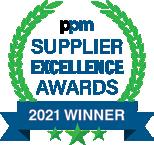



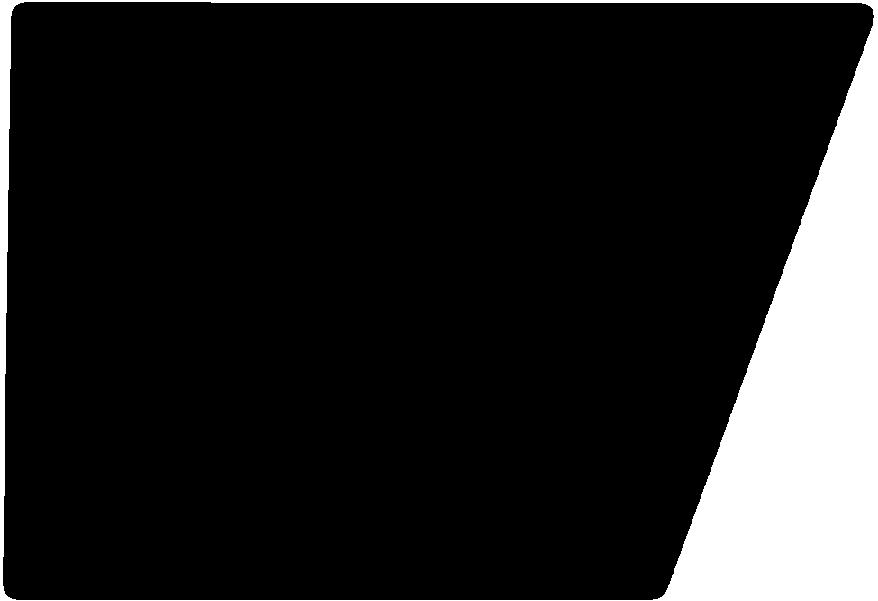
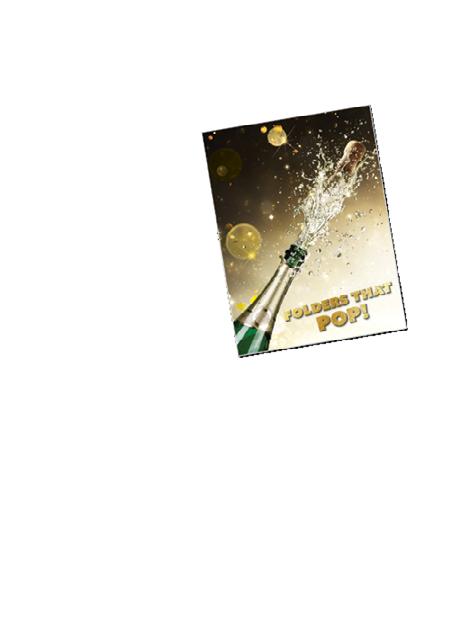


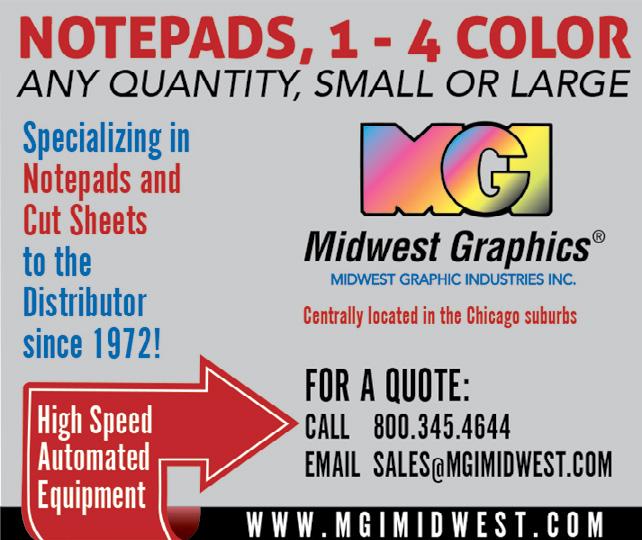
UNITED STATES POSTAL SERVICE STATEMENT OF OWNERSHIP, MANAGEMENT, AND CIRCULATION 1. Publication Title: WhatTheyThink; 2. Publication Number: 500850; 3. Filing Date (09/23/2024); 4. Issue Frequency: January/February, March/April, May/June, July/August, September/October, and November/December; 5. Number of Issues Published Annually: 6; 6. Annual Subscription Price: Free to Qualified Subscribers; 7. Complete Mailing Address of Known Office of Publication: WhatTheyThink, 2038 FORD PKWY # 218, MN 55116; Contact Person Adam Dewitz. Contact Telephone: (612) 424-5090; 8. Complete Mailing Address of Headquarters or General Business Office of Publisher: WhatTheyThink, 2038 FORD PKWY # 218 SAINT PAUL, MN 55116-1931; 9. Full Names and Complete Mailing Addresses of Publisher, Editor, and Managing Editor: Publisher: Julie Shaffer, 2038 FORD PKWY # 218 SAINT PAUL MN 55116; Editor (Name and Complete Mailing Address): Amy Noble. 2038 FORD PKWY # 218 SAINT PAUL, MN 55116; Managing Editor: Richard Romano. 2038 FORD PKWY # 218 SAINT PAUL, MN 55116-1931; 10. Owner: Association for PRINT Technologies, Inc, 450 Rev Kelly M Smith Way Nashville, TN 37203; 11. Known Bondholders, Mortgagees, and Other Security Holders Owning or Holding 1 Percent or more of Total Amount of Bonds, Mortgages or Other Securities: None; 12. Tax Status: Has Not Changed During Preceding 12 Months; 13. Publication Title: WhatTheyThink; 14. Issue Date for Circulation Data Below: September/October 2024; 15. Extent and Nature of Circulation: A. Total Number of Copies. Average No. Copies Each Issue During Preceding 12 Months: 33,613 (Sep/Oct24: 33,254); B.1. Outside County Paid/Requested Mail Subscriptions stated on PS Form 3541. Average No. Copies Each Issue During Preceding 12 Months: 19,893 (Sep/Oct24: 19,540); B.2 Paid Circulation Mailed In- County Paid Subscriptions Stated on PS Form 3541. Average No. of Copies Each Issue During Preceding 12 Months: 0 (Sep/Oct24: 0); B.3. Paid Distribution Outside the Mails Including Sales Through Dealers and Carriers, Street Vendors, Counter Sales, and Other Paid Distribution Outside USPS. Average No. of Copies Each Issue During Preceding 12 Months: 0 (Sep/Oct24: 0); B.4. Paid Circulation by Other Classes of Mail Through the USPS. Average No. of Copies Each Issue During Preceding 12 Months: 0 (Sep/Oct24: 0); C. Total Paid Distribution. Average No. of Copies Each Issue During Preceding 12 Months: 19,893 (Sep/Oct24: 19,540); D.1. Free or Nominal Rate Outside- County Copies Included on PS Form 3541. Average No. of Copies Each Issue During Preceding 12 Months: 13,526 (Sep/Oct24: 13,891); D.2. Free or Nominal Rate In-County Copies Included on PS Form 3541. Average No. of Copies Each Issue During Preceding 12 Months: 0 (Sep/Oct24: 0); D.3. Free or Nominal Rate Copies Mailed at Other Classes Through the USPS. Average No. of Copies Each Issue During Preceding 12 Months: 0 (Sep/Oct24: 0); D.4. Free or Nominal Rate Distribution Outside the Mail. Average No. of Copies Each Issue During Preceding 12 Months: 0 (Sep/Oct24: 0); E. Total Free or Nominal Rate Distribution. Average No. of Copies Each Issue During Preceding 12 Months: 13,526 (Sep/Oct24: 13,891; F. Total Distribution. Average No. of Copies Each Issue During Preceding 12 Months: 33,428 (Sep/Oct24: 33,431); G. Copies Not Distributed. Average No. of Copies Each Issue During Preceding 12 Months: 350 (Sep/Oct24: 1,055); H. Total. Average No. of Copies Each Issue During Preceding 12 Months: 33,668 (Sep/Oct 24: 33,469); I. Percent Paid. Average No. of Copies Each Issue During Preceding 12 Months: 59.5% (Sep/Oct 24: 58.4%); 16. Electronic Copy Circulation. A. Paid Electronic Copies. Average No. of Copies Each Issue During Preceding 12 Months: 0 (Sep/Oct 24: 0); B. Total Paid Print Copies + Paid Electronic Copies. Average No. of Copies Each Issue During Preceding 12 Months: 19,893 (Sep/Oct24: 19,540); C. Total Print Distribution + Paid Electronic Copies. Average No. of Copies Each Issue During Preceding 12 Months: 33,419 (Sep/Oct24: 33,431); D. Percent Paid (Both Print & Electronic Copies). Average No. of Copies Each Issue During Preceding 12 Months: 59.5%% (Sep/Oct24: 58.4%%); I certify that 50% of all my distributed copies (electronic and print) are paid above
